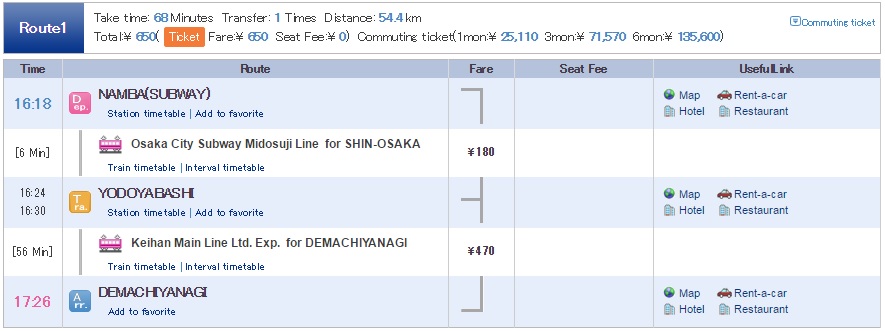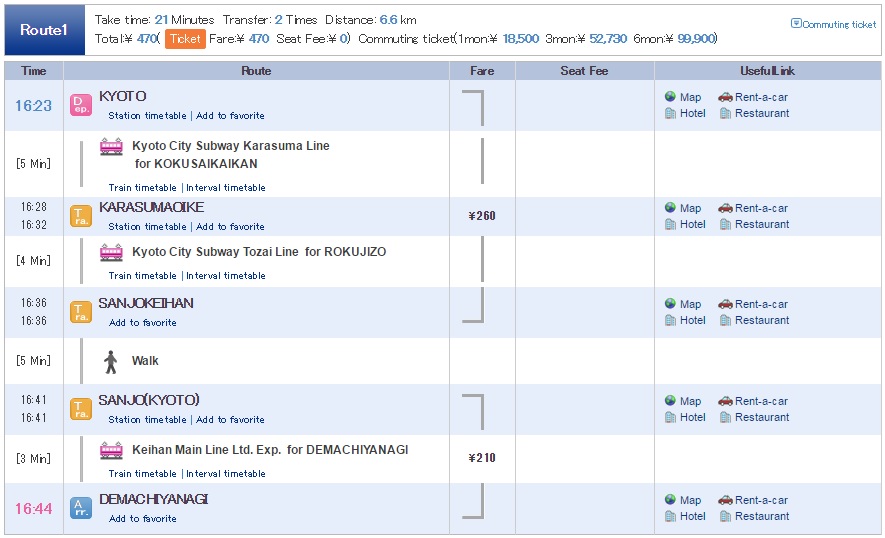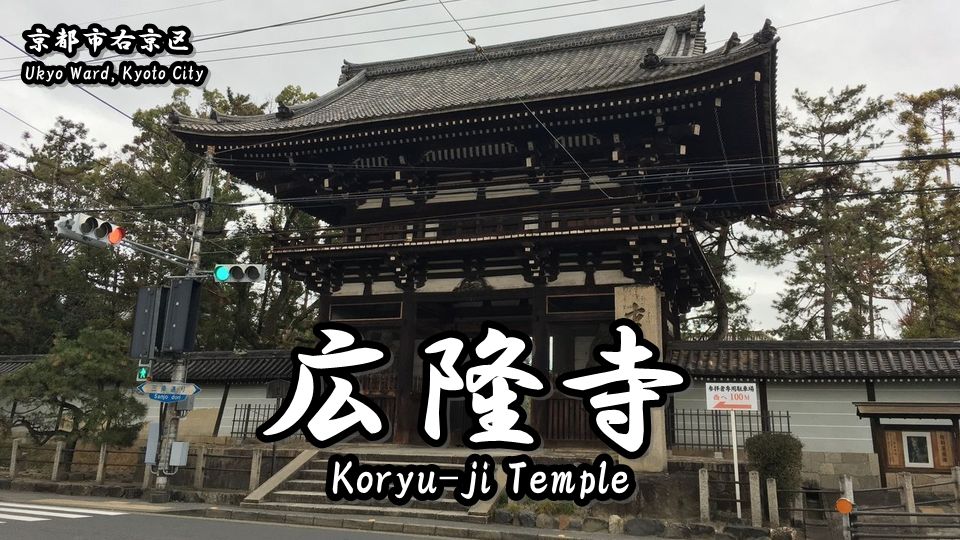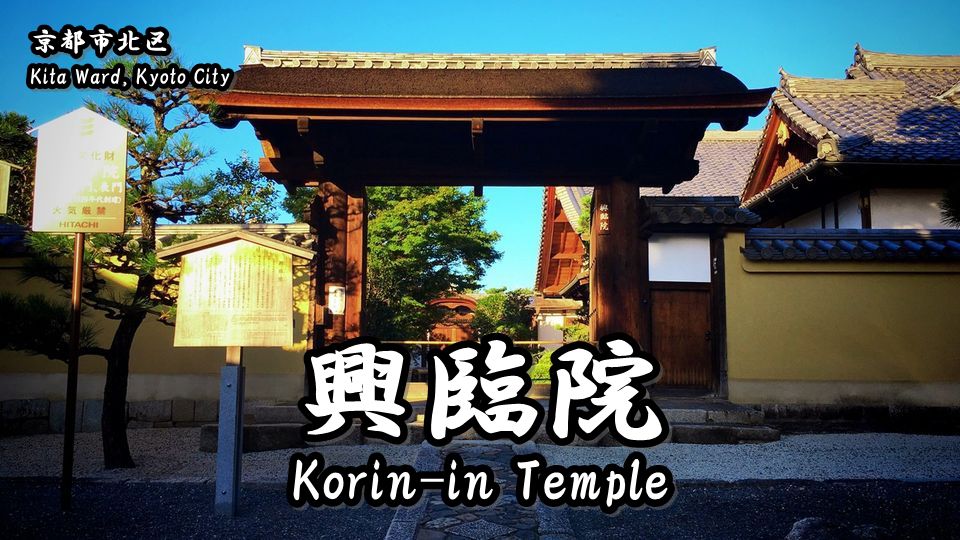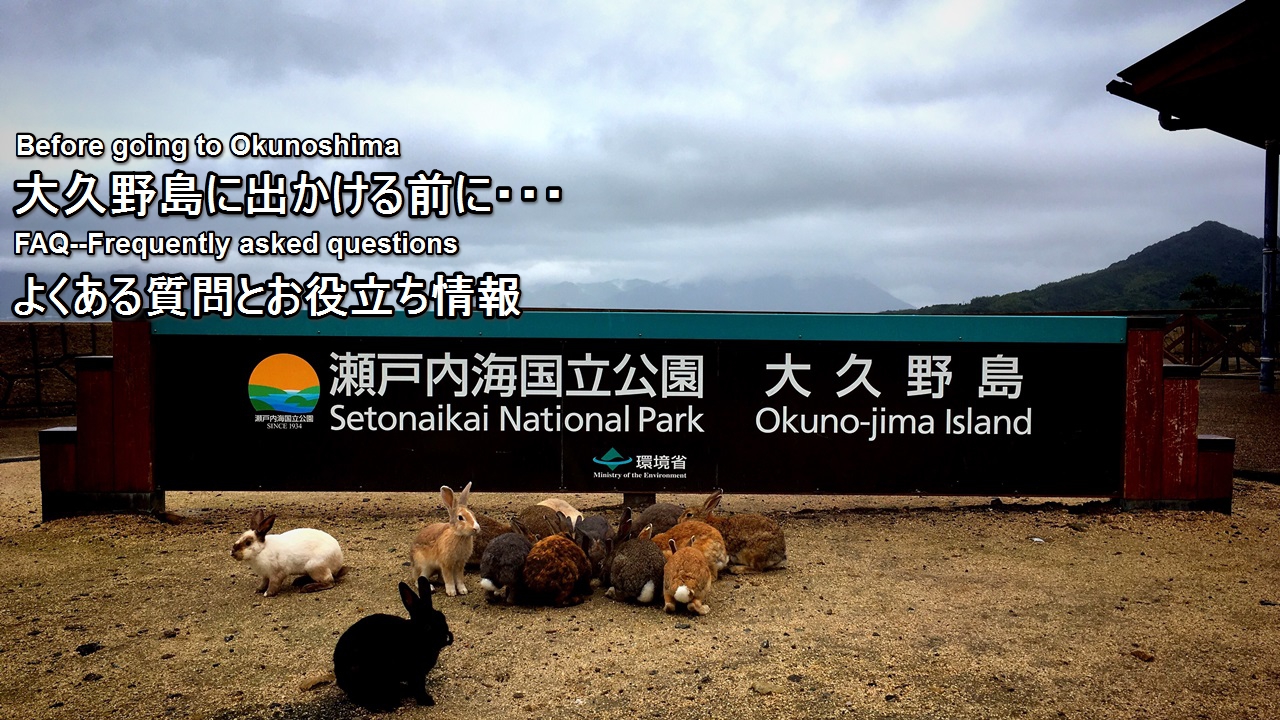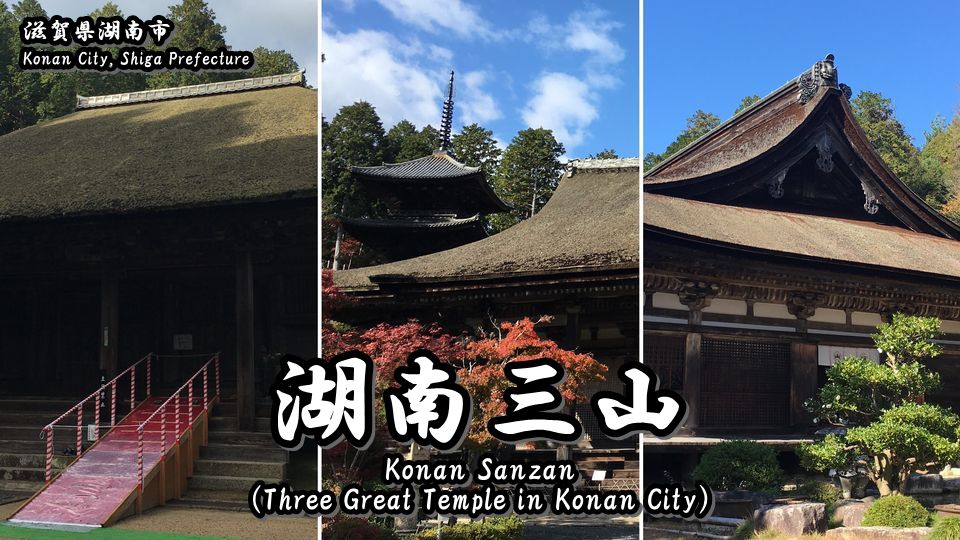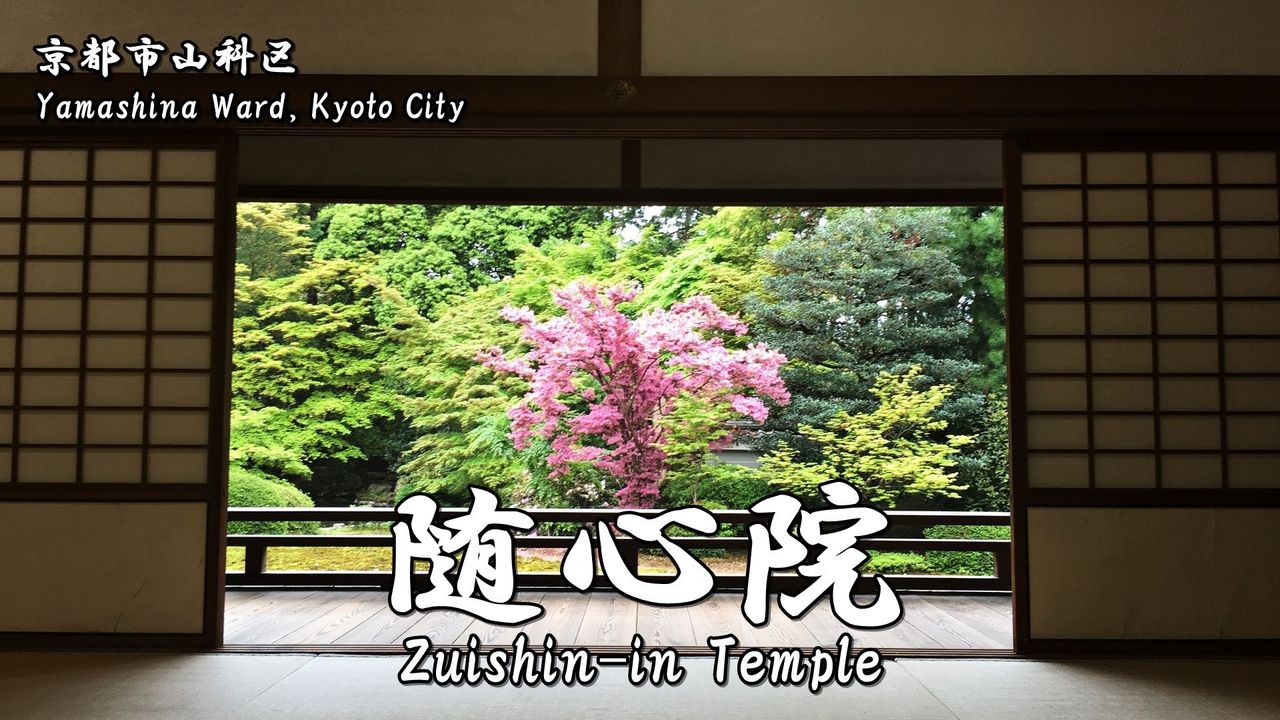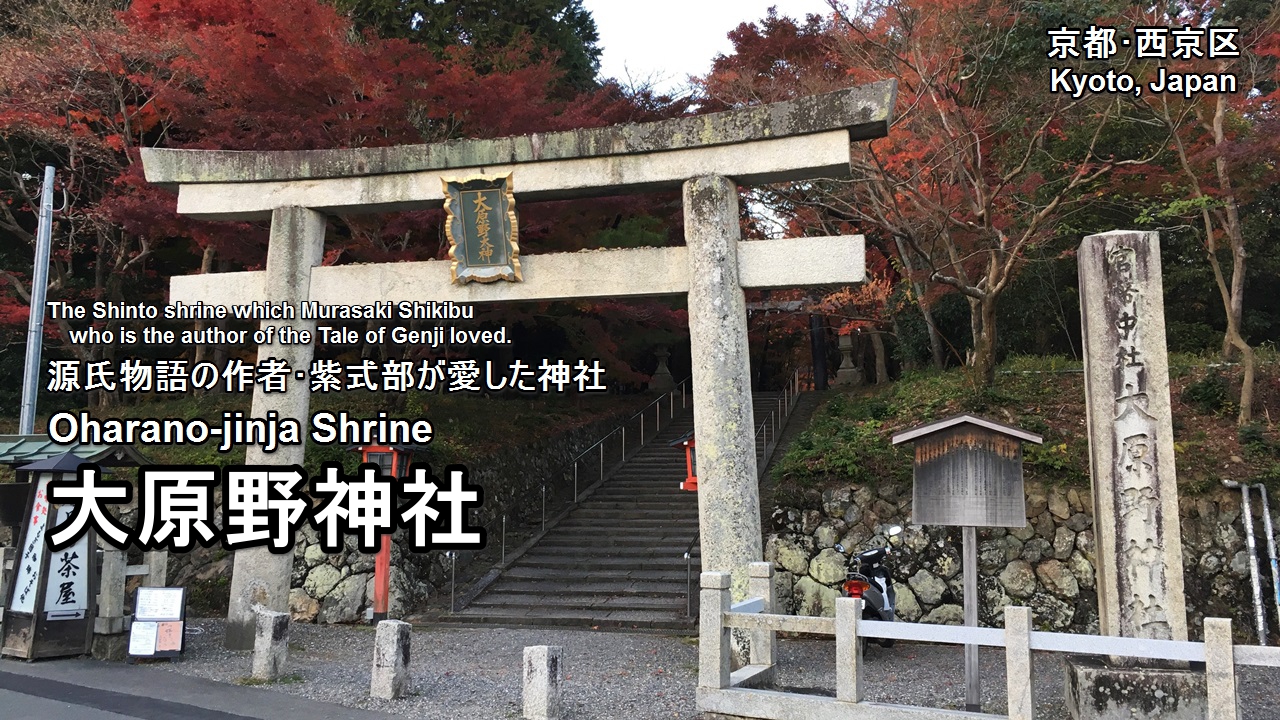Shimogamo-jinja Shrine is one of the Japanese oldest Shinto shrines along with Kamigamo-jinja Shrine.
Along with Kamigamo-jinja Shrine, it enshrines ancient ujigami of the Kamo clan, and the pair generally being referred to as Kamo-jinja Shrine (Kamo-sha) and treated as paired shrines.
“賀茂建角身命(Kamo-taketunumi-no-mikoto)” who are a grandfather of “賀茂別雷神(Kamo-wakeikazuchi-no-kami)” and “玉依媛命(Tamayorihime-no-mikoto)” who are a mother of “賀茂別雷神(Kamo-wakeikazuchi-no-kami)” is enshrined in Shimogamo-jinja Shrine.
(Kamigamo-jinja Shrine enshrines God called “賀茂別雷神(Kamo-wakeikazuchi-no-kami)”.)
Thus, the official name of this Shinto shrine is called “賀茂御祖神社(Kamo Mioya-jinja Shrine)”.
The word “御祖(Mioya)” has a meaning of “God’s parents”.
The history of this Shinto shrine is very old and is one of Japan oldest Shinto shrines with Kamigamo-jinja Shrine.
And this shrine has been designated as the Michelin green guide ★ and the World Heritage List as part of the cultural assets of ancient capital of Kyoto.
↓About Kamigamo-jinja Shrine↓
Contents:
- About World Heritage ‘Historic Monuments of Ancient Kyoto’
- What is the difference between Kamigamo-jinja Shrine and Shimogamo-jinja Shrine?
- About Shimogamo-jinja Shrine
- The highlights of Shimogamo-jinja Shrine
- Tadasu-no-Mori forest : Virgin forest around Shimogamo-jinja Shrine
- Kawai-jinja Shrine : Shinto shrine with the divine favor of the beauty
- Goshuin(shrine seal or stamp) of Shimogamo-jinja Shrine
- How to get to Shimogamo-jinja Shrine
1.About World Heritage ‘Historic Monuments of Ancient Kyoto’
17 places of temples and shrines of Kyoto are designated in ‘Historic Monuments of Ancient Kyoto’.
↓Details of the “Historic Monuments of Ancient Kyoto” is here.↓
Shimogamo-jinja Shrine has been designated as the World Heritage List as part of the cultural assets of ancient capital of Kyoto.
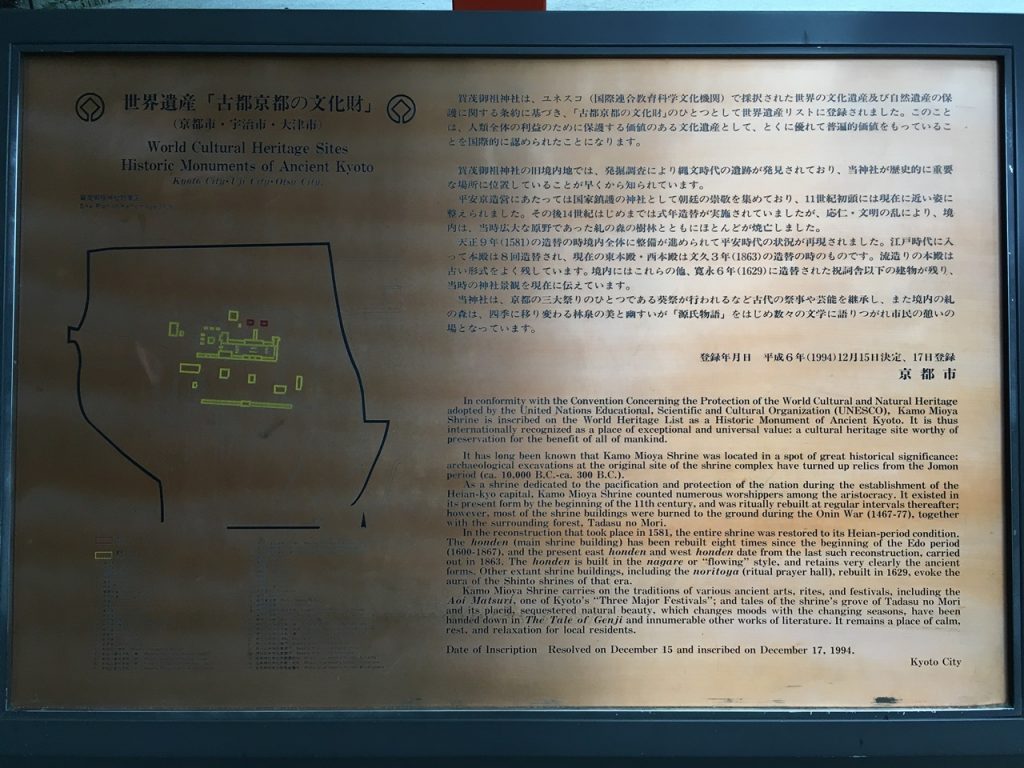
2.What is the difference between Kamigamo-jinja Shrine and Shimogamo-jinja Shrine?
Kyoto has two shrines which are called “Kamigamo-jinja Shrine” and “Shimogamo-jinja Shrine”.
(Both Shinto shrines are world heritages.)
Originally these two Shinto shrines were one Shinto shrine which was called “Kamo-jinja Shrine (Kamo-sha)”.
However, it was divided into the north and south Shinto shrines in about 700 years in the Christian era because the scale of the Shinto shrine became too much big.
Afterwards, the Shinto shrine of the north side started to be called “Kamigamo-jinja Shrine”, the Shinto shrine of the south side started to be called “Shimogamo-jinja Shrine”.
Currently, Kamigamo-jinja Shrine enshrines God called “賀茂別雷神(Kamo-wakeikazuchi-no-kami)”.
And “賀茂建角身命(Kamo-taketunumi-no-mikoto)” who are a grandfather of “賀茂別雷神(Kamo-wakeikazuchi-no-kami)” and “玉依媛命(Tamayorihime-no-mikoto)” who are a mother of “賀茂別雷神(Kamo-wakeikazuchi-no-kami)” is enshrined in Shimogamo-jinja Shrine.
There is no order in these two Shinto shrines.
In addition, when we watch the name of these Shinto shrine well…
上賀茂神社(Kamigamo-jinja Shrine)
下鴨神社(Shimogamo-jinja Shrine)
We notice that a different kanji(kamo=鴨=賀茂) is used for the name of these Shinto shrine. (○´艸`)
Originally it is said that both Shinto shrines used kanji of “鴨“.
However, a kanji written as “賀茂” that was lucky words was added to the name of the Shinto shrine of the north side in about 726 in the Christian era.
By the way, the river flowing through the center of Kyoto is called Kamogawa River.
The name of this river also includes two notation of kanji such as “賀茂川(Kamogawa River)” and “鴨川(Kamogawa River)”.
The Kamogawa River up to Kamigamo-jinja Shrine is called “賀茂川(Kamogawa River)”, and from Shimogamo-jinja Shrine is called “鴨川(Kamogawa River)”.
3.About Shimogamo-jinja Shrine
Shimogamo Shrine (下鴨神社 Shimogamo-jinja) in Japanese, is the common name of an important Shinto sanctuary in the Shimogamo district of Kyoto city’s Sakyō ward. Its formal name is Kamo-mioya-jinja (賀茂御祖神社).[1] It is one of the oldest Shinto shrines in Japan and is one of the seventeen Historic Monuments of Ancient Kyoto which have been designated by UNESCO as a World Heritage Site. The term Kamo-jinja in Japanese is a general reference to Shimogamo Shrine and Kamigamo Shrine, the traditionally linked Kamo shrines of Kyoto;[2] Shimogamo is the older of the pair, being believed to be 100 years older than Kamigamo, and dating to the 6th century, centuries before Kyoto became the capital of Japan (794, see Heian-kyō). The Kamo-jinja serve the function of protecting Kyoto from malign influences.[3]
引用(citation):https://en.wikipedia.org/wiki/Shimogamo_Shrine
Open:5:30~18:00(Summer time),6:30~17:00(Winter time)
Admission Fee:Free(Charge only for visiting the 大炊殿(Oidono): 500 yen(Adults),250 yen(Children))
Adress:59, Shimogamo Izumigawacho, Sakyo-ku Kyoto-shi, Kyoto, 606-0807, Japan
連絡先:+81-75-781-0010
The official name of this Shinto shrine is 賀茂御祖神社(Kamo Mioya-jinja Shrine), and the popular name is “下鴨神社(Shimogamo-jinja Shrine)”.
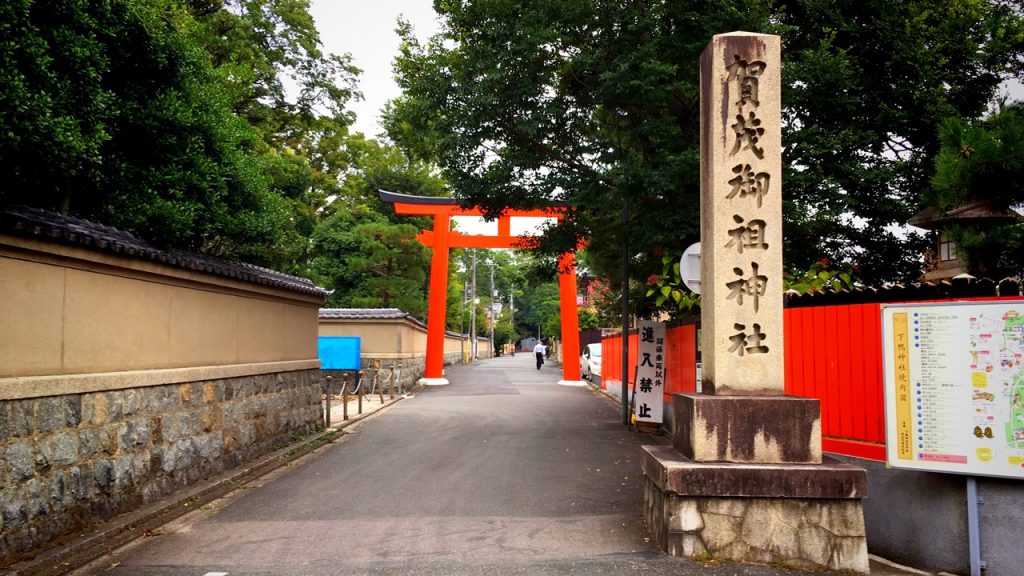
The history of this Shinto shrine is very old and is one of Japan oldest Shinto shrines with Kamigamo-jinja Shrine.
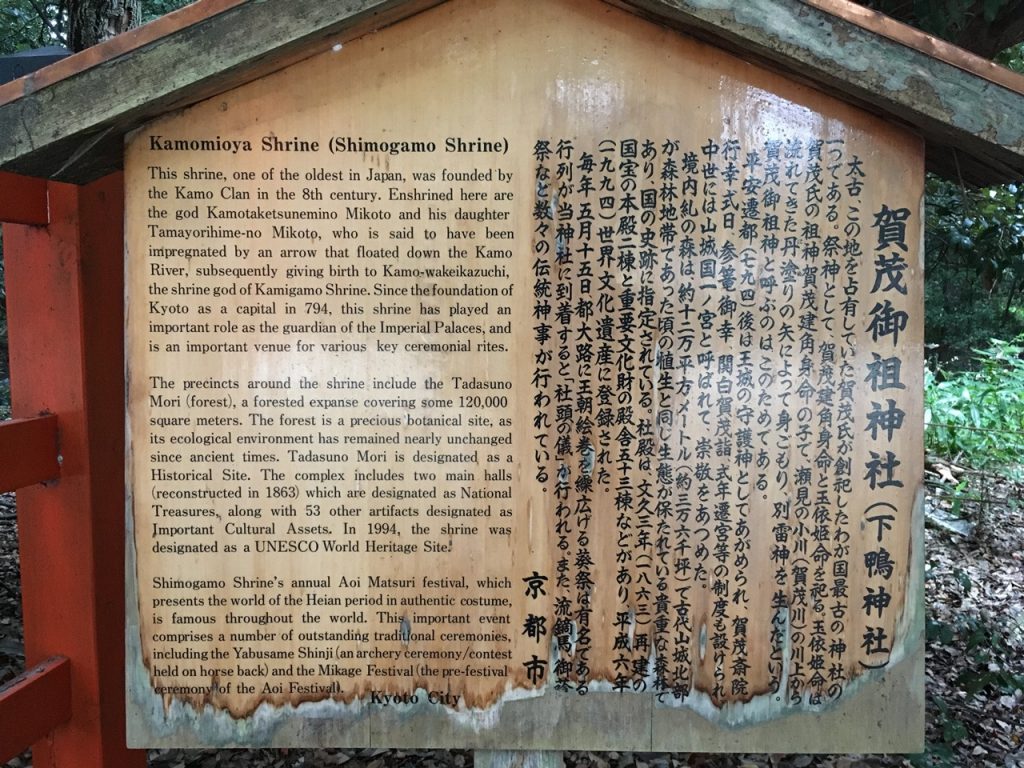
4.The highlights of Shimogamo-jinja Shrine
This is a torii of the south exit which is the entrance of the Shinto shrine.
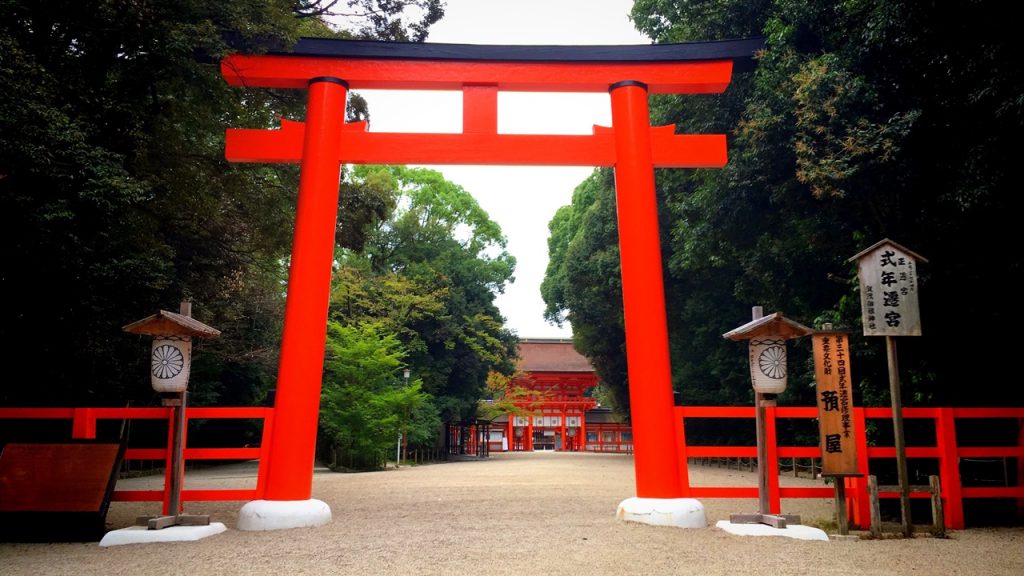
There is the “Sazare-stone(the meaning is pebbles)” on the left when we go ahead through the approach to a shrine.
This stone is sung in one paragraph of “Kimigayo” that is a Japanese national anthem.
“君が代は(May your reign) 千代に八千代に(Continue for a thousand, eight thousand generations,) さざれ石の(Until the pebbles) いわおとなりて(Grow into boulders) こけのむすまで(Lush with moss)”
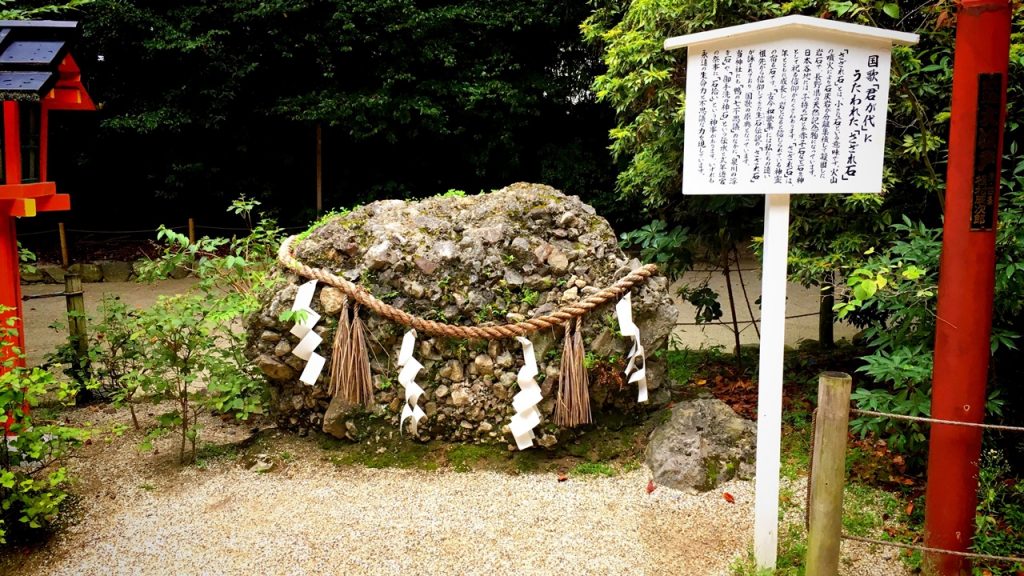
This is Aioi-jinja Shrine that is one of the auxiliary shrine (dedicated to a deity close-related to that of a main shrine) of Shimogamo-jinja Shrine.
This Shinto shrine worships “産霊神(Musubi-no-Kami)” which is god of marriage.
The kanji called “Aioi(相生)” has a meaning of “to be happy”. It is derived from the name of this Shinto shrine.
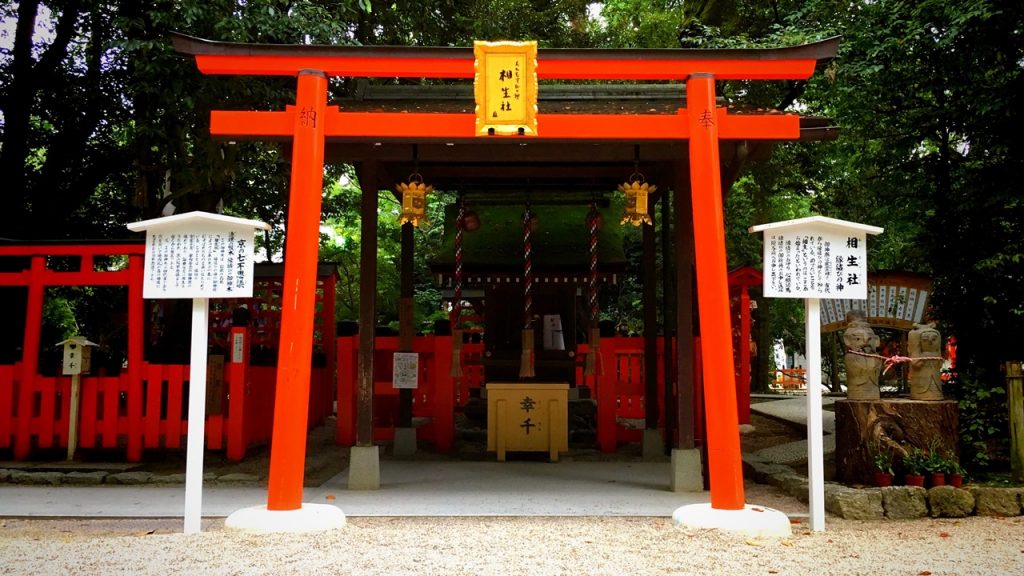
There is a sacred tree called “連理の賢木(Sakaki of the eternal love)” beside this Shinto shrine.
As for this sacred tree, two trees lead to one on the way.
The person wanting a good match will pray this tree and shrine.
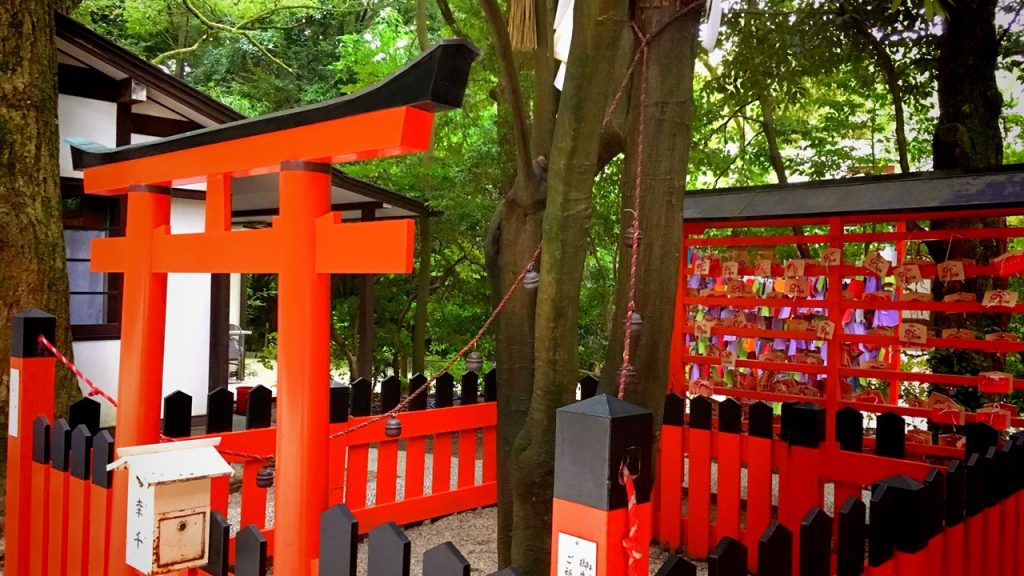
This is the Romon Gate(楼門).
This gate is an important cultural property of a country which was rebuilt in 1628.

The Kiku-mon (chrysanthemum crest) of imperial family is put up at the gate.
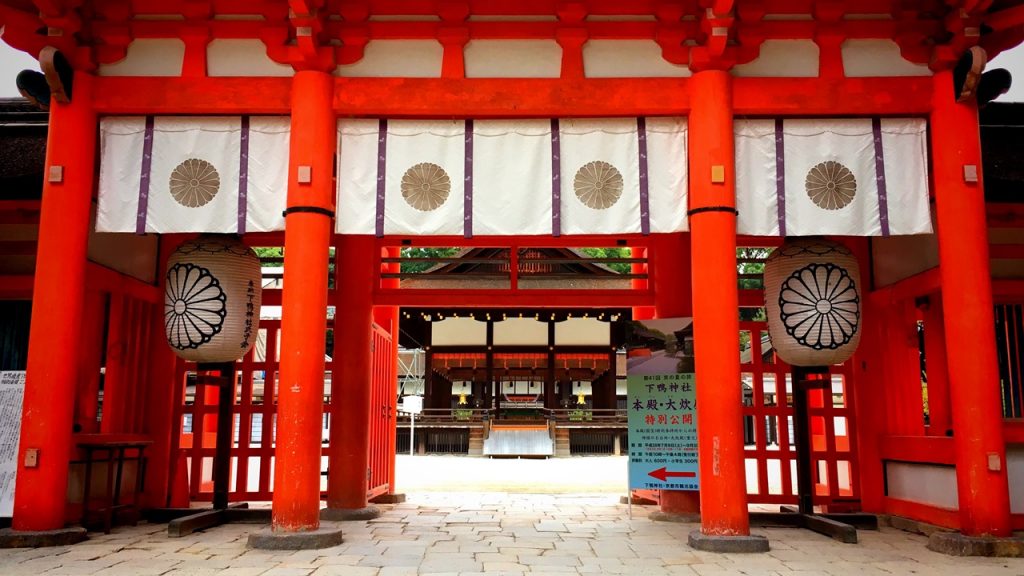
A corridor extends to the east and west of the Romon Gate(楼門).

There is “the room of the sword” to the west corridor.
At the time of the “Aoi Festival(葵祭)” that is one of three Kyoto big festivals to be held in May every year, this is the place where an Imperial envoy unties a sword here.

↓About Aoi Festival(葵祭)↓
A building in the center of the precincts is Maidono(舞殿).
This building is an important cultural property of a country which was rebuilt in 1628.
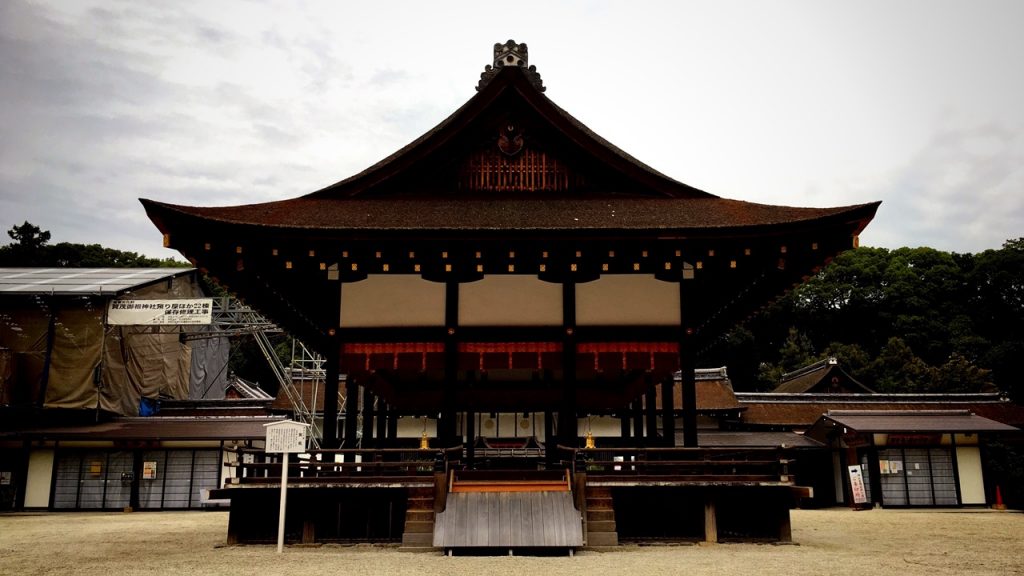
This building is the place where 東游 (Azuma Asobi) which is one of the gagaku (ancient court music) is dedicated at the time of Aoi Festival.
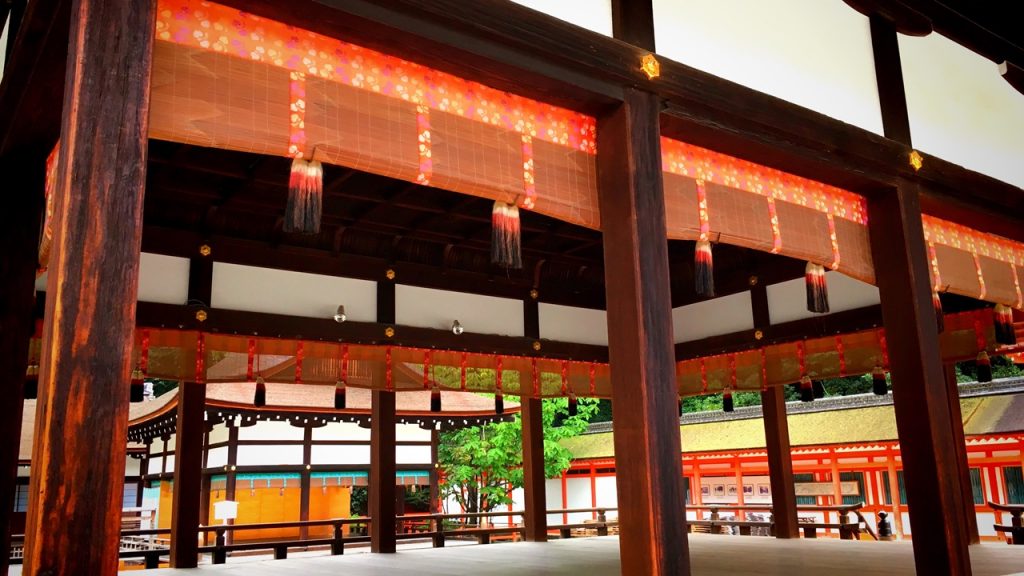
Its roof is Irimoya-zukuri (half-hipped) and covered with cypress bark shingles.
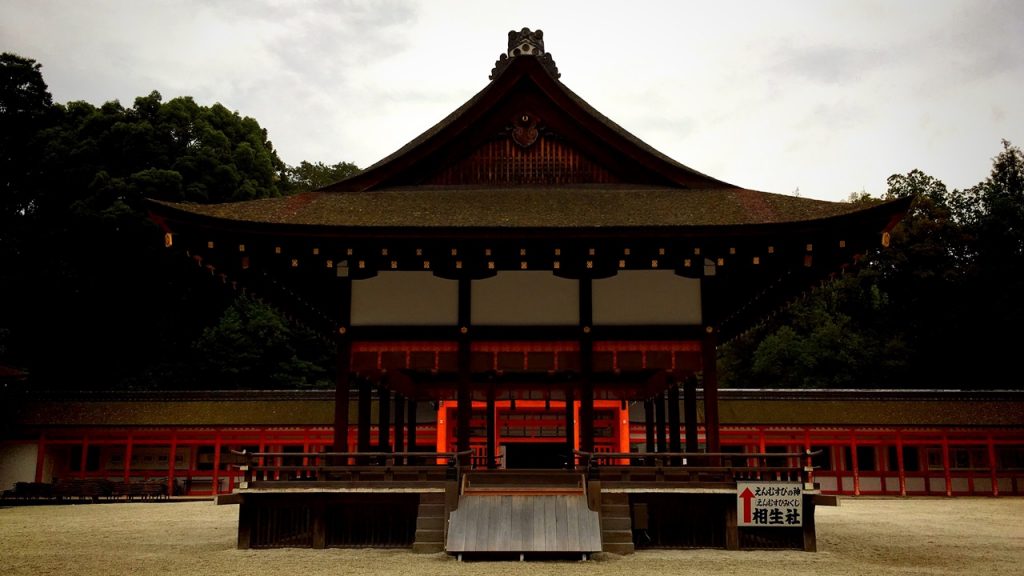
This is the Chumon Gate(中門).
This building is an important cultural property of a country.
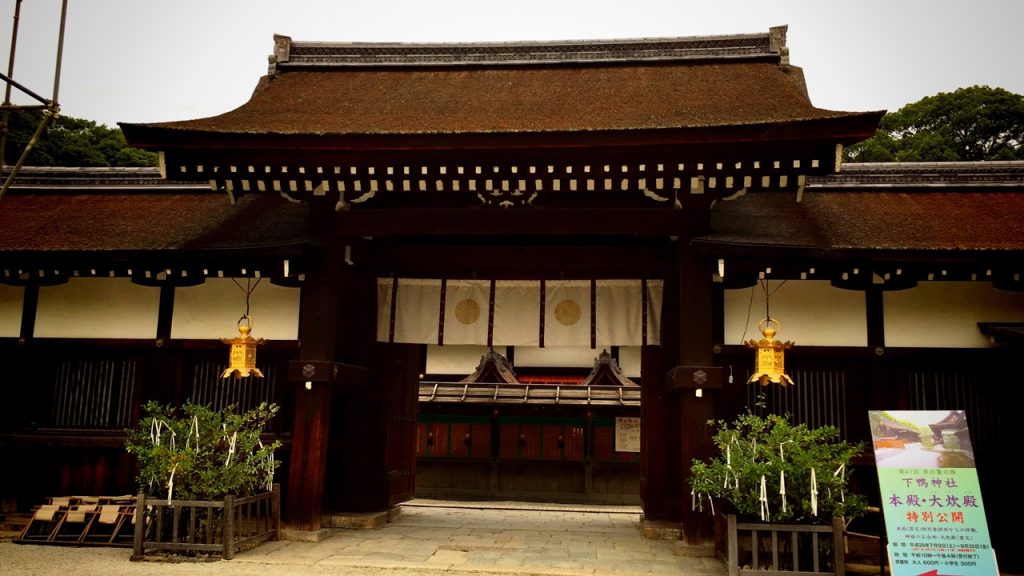
This is the Heiden(幣殿). This building is an important cultural property of a country.
There is a Honden(main shrine building) in the depths of this building.
The Honden(main shrine building) is divided into the building of east and west.
Both buildings are designated as a national treasure.
The east Honden worships “玉依媛命(Tamayorihime-no-mikoto)” and the west Honden worships “賀茂建角身命(Kamo-taketunumi-no-mikoto)”.
Photography and video recording are prohibited in the Honden.
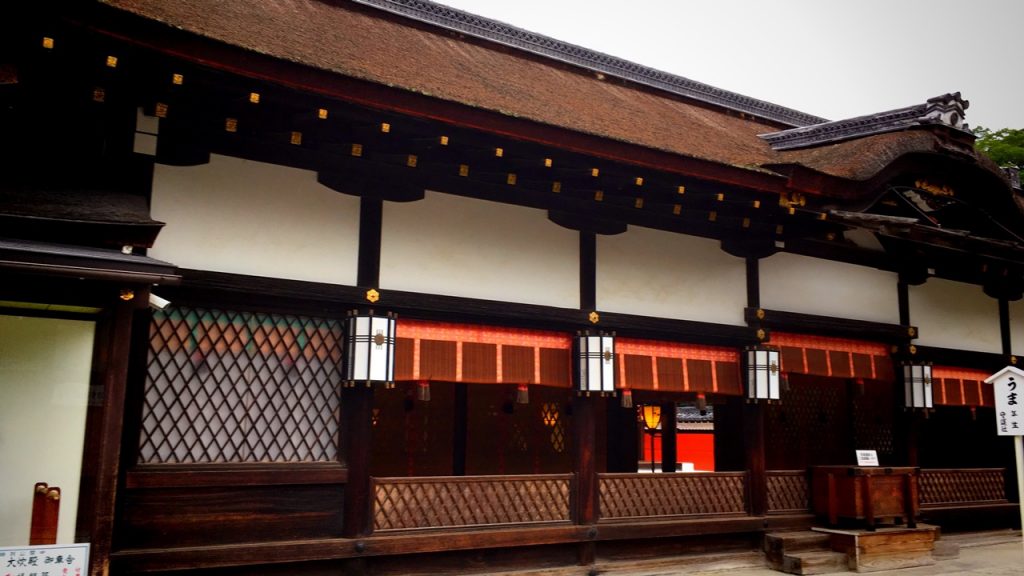
There is a small Shinto shrine called “Koto-sha Shrine(言社)” which worship the twelve signs of the oriental zodiac in front of the main shrine.
There is divine favor by praying at one’s born sexagenary cycle.
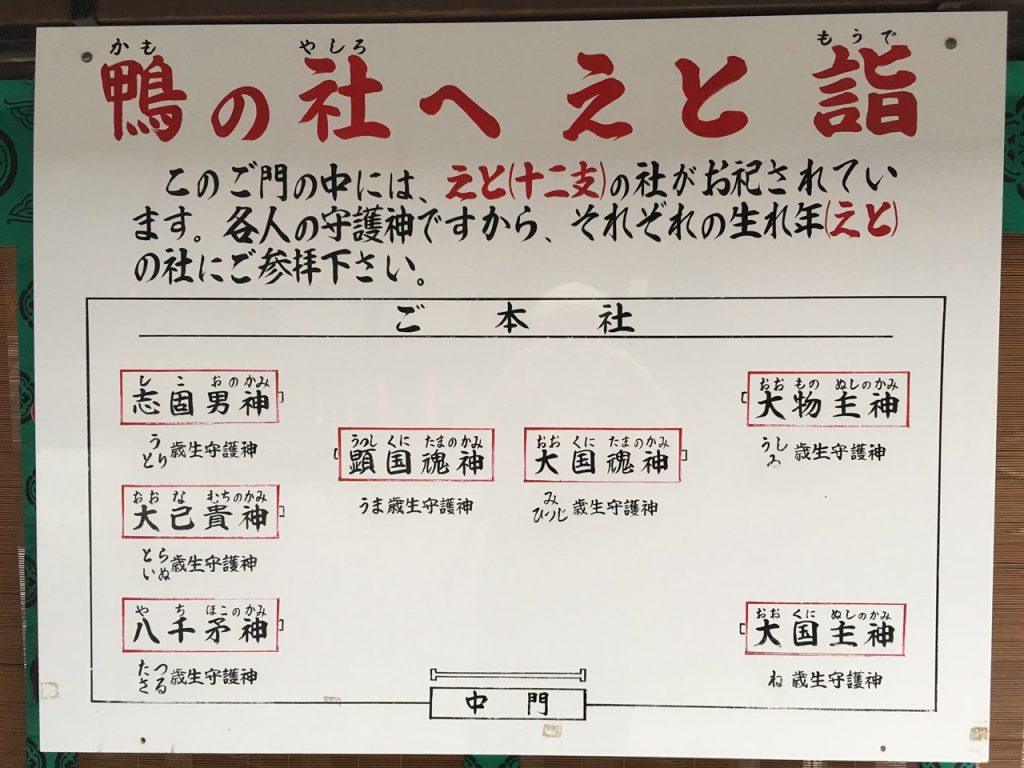
There are small Shinto shrines which worship “寅 (tiger) “, “卯 (rabbit) “, “辰 (dragon)”, “申 (monkey)”, “酉 (bird)” and “戌 (dog)” on the left side of main shrine.
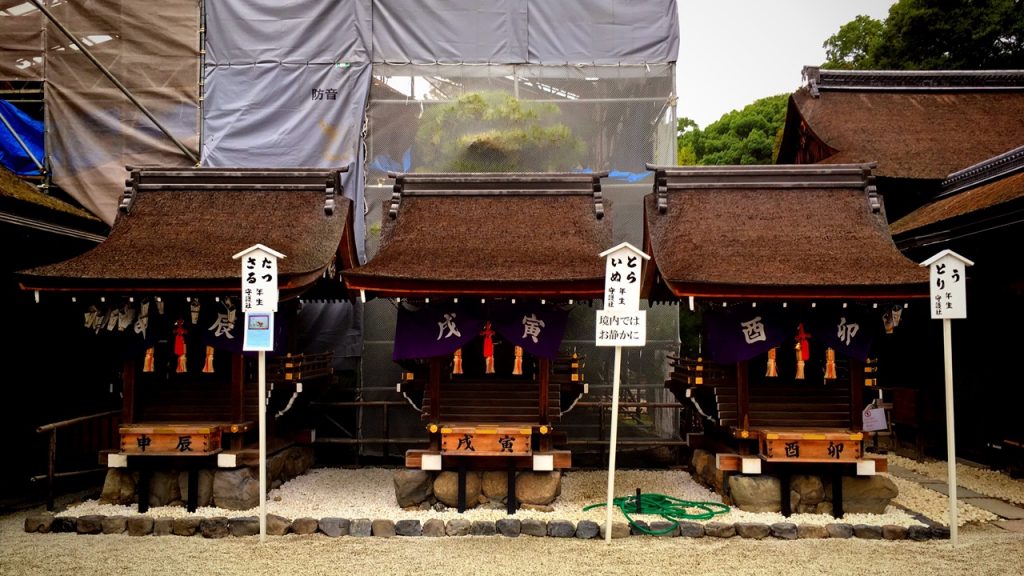
There is small Shinto shrine which worship “午 (horse) ” on the left side center of main shrine.
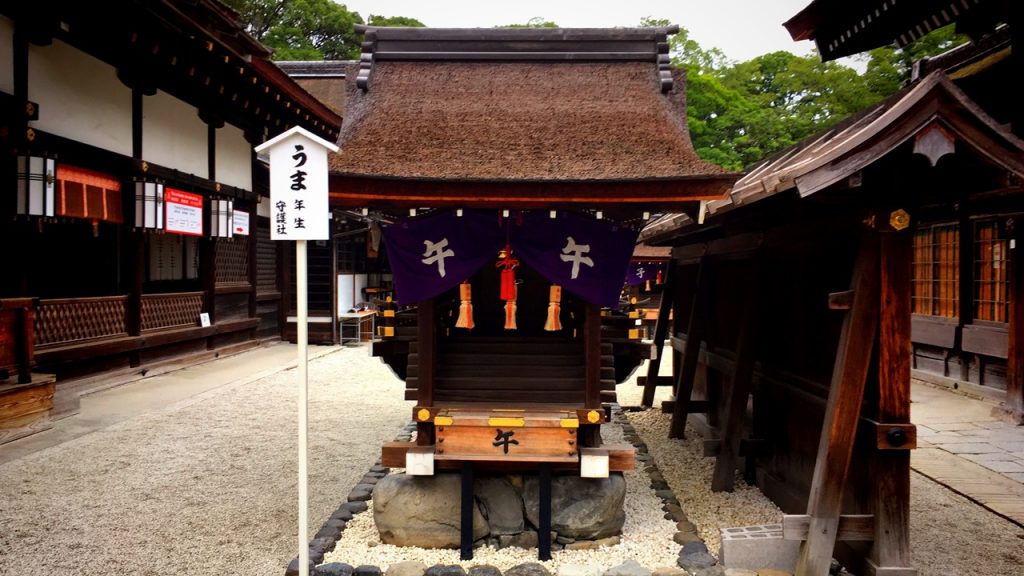
There is small Shinto shrine which worship ” 巳 (snake) ” and “未 (sheep)” on the right side center of main shrine.
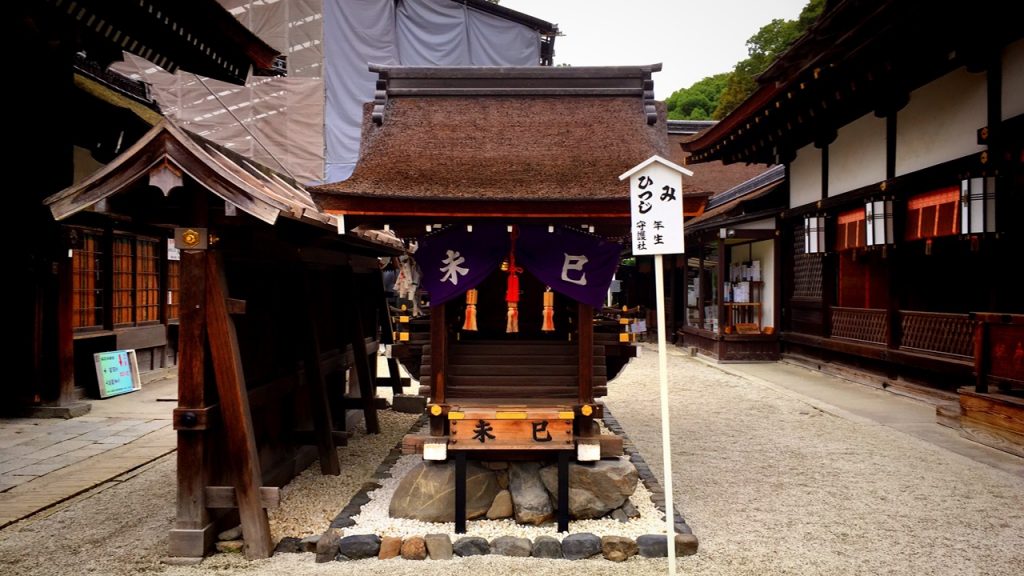
There are small Shinto shrines which worship “子 (rat) “, “丑 (cow) ” and “亥 (wild boar)” on the right side of main shrine.
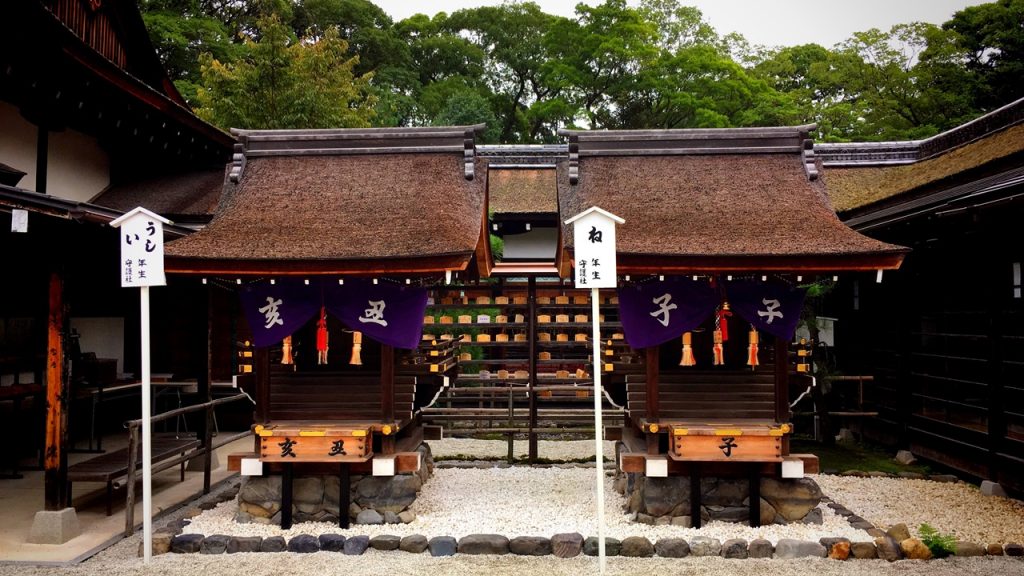
This is the Hashidono(橋殿).
This building is an important cultural property of a country which was rebuilt in 1628.
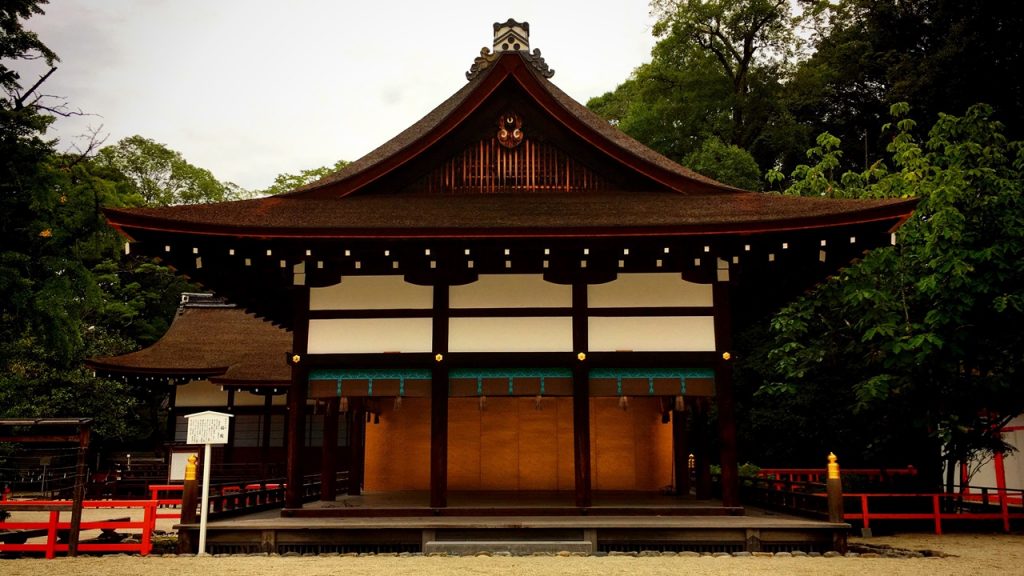
This building is the place where the 舞楽 (Court dance and music) is dedicated at the time of the 名月管絃祭 (beautiful moon and music festival).
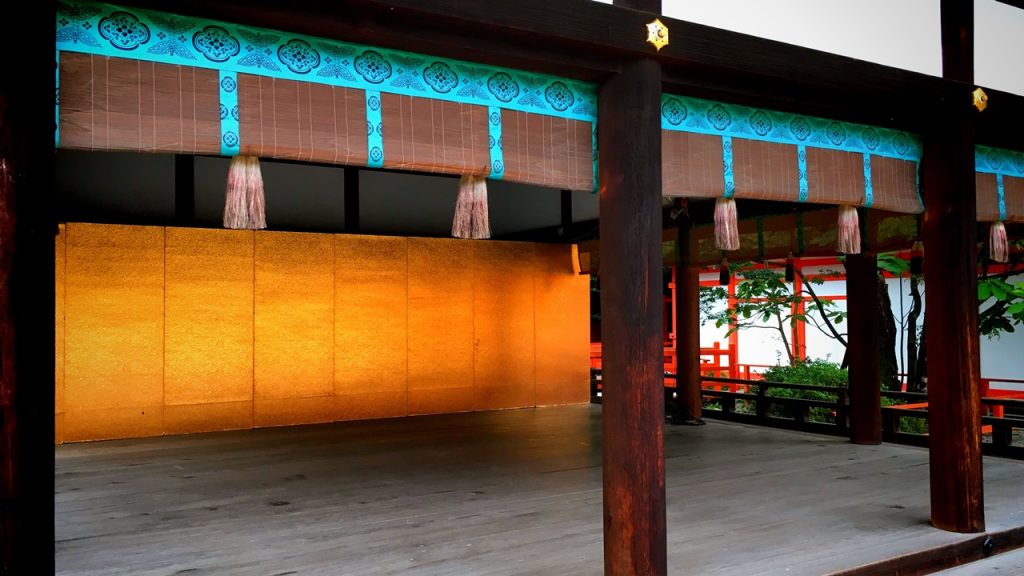
This is the 細殿御所(Hosodono Gosho).
This building is an important cultural property of a country which was rebuilt in 1628.
This building is the place where a poem competition and a tea party were held when the Emperor came to this Shinto shrine in old days.
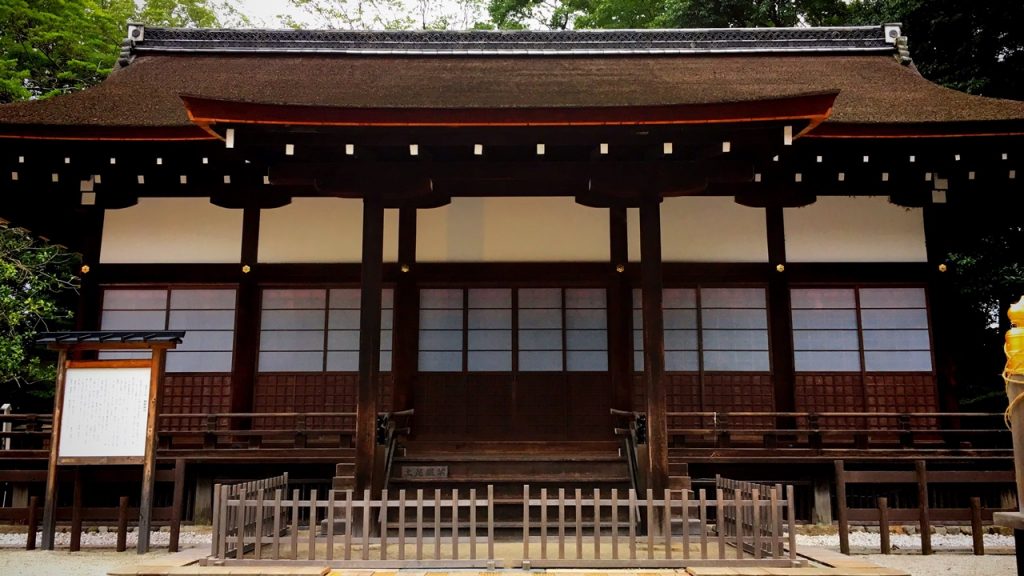
This is the 解除所(Gejo-no-Tokoro).
This place is a place to purify before important acts of God such as the Aoi Festival.
There is another 解除所(Gejo-no-Tokoro) other than this place in this shrine.
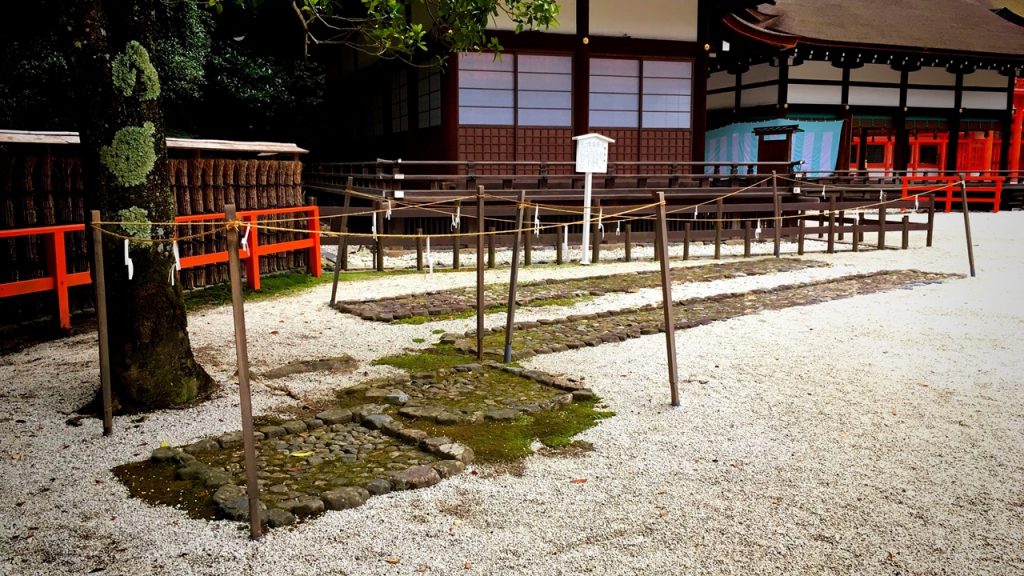
The river named 御手洗川(Mitaraigawa River) flows through the precincts of Shimogamo-jinja Shrine.
(There is the river of the same name in Kamigamo-jinja Shrine, but is a different river of the different source of a river.)
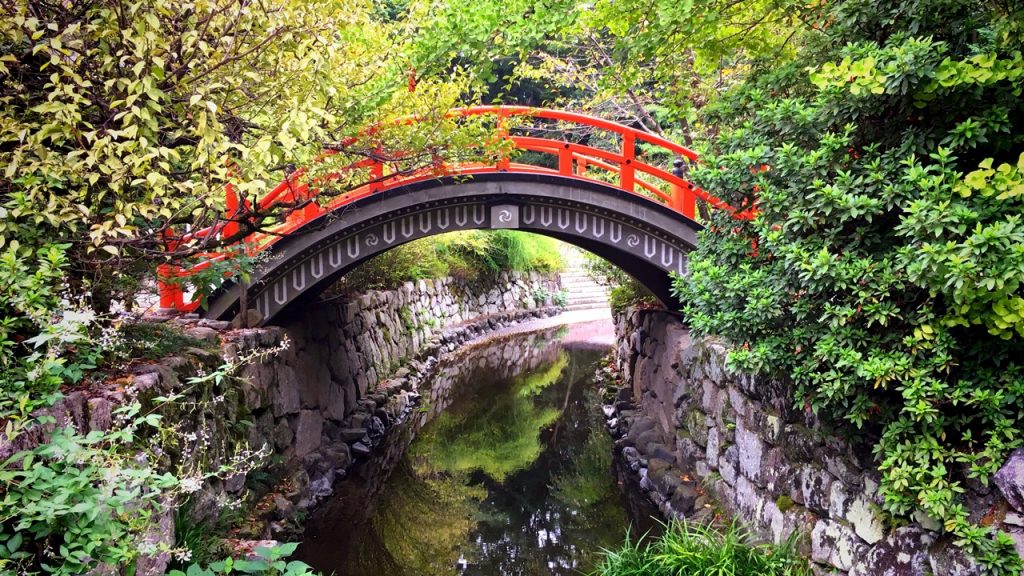
A building built on a well of the source of a river of this river is “Inoue-jinja Shrine”.
This Shinto shrine has divine favor to protect from the misfortunes such as a disease or the injury.
In addition, it is said that the Japanese sweets called the Mitarashi dango was made in imitation of air bubbles of the water which sprang out of this well.
This place is the birthplace of the Mitarashi dango.
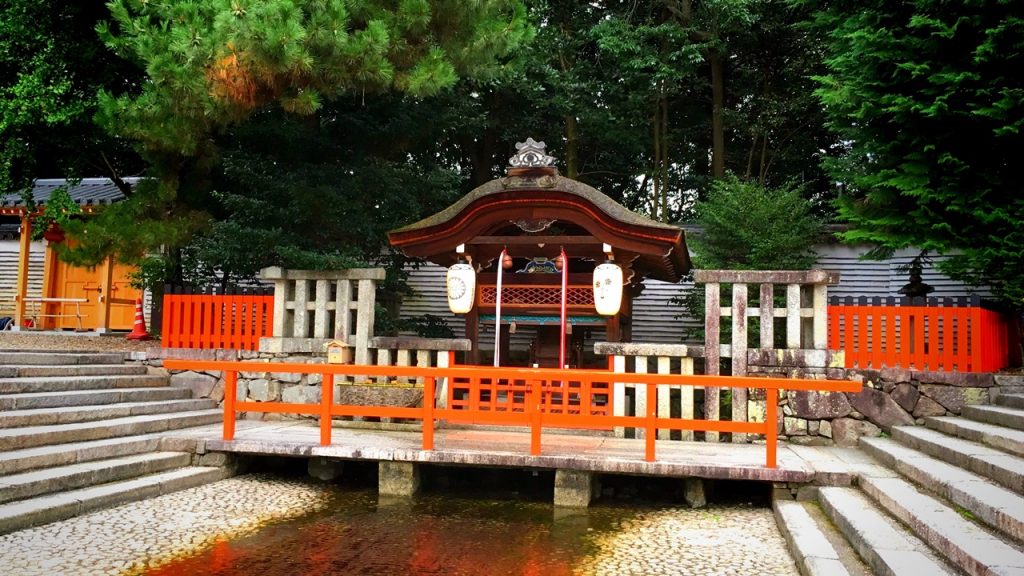
This is the 神服殿(Shimpukuden) which is built in the west of the precincts.
This building is an important cultural property of a country which was rebuilt in 1628.
This building was a place where the 御神服(God’s clothes) were sewed here.

This is a Japanese white pine(媛小松) which is planted beside the 神服殿(Shimpukuden) .
This pine tree is sung in one paragraph of the 東遊 (Azuma Asobi) of the gagaku.
As for The kanji called “媛” of this tree, “玉依媛命(Tamayorihime-no-mikoto)” is the origin.
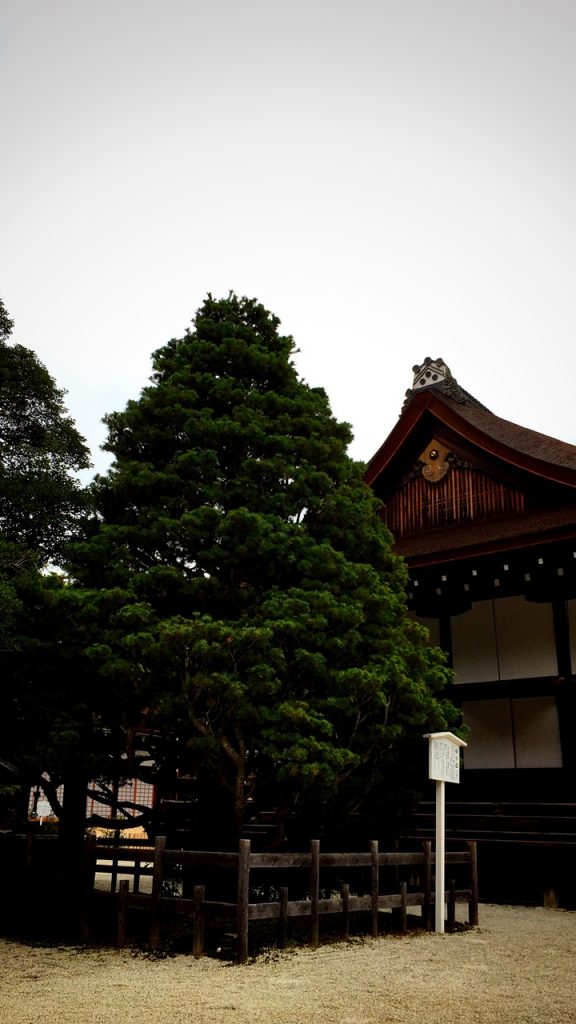
There is another “解除所(Gejo-no-Tokoro)” before this pine tree.
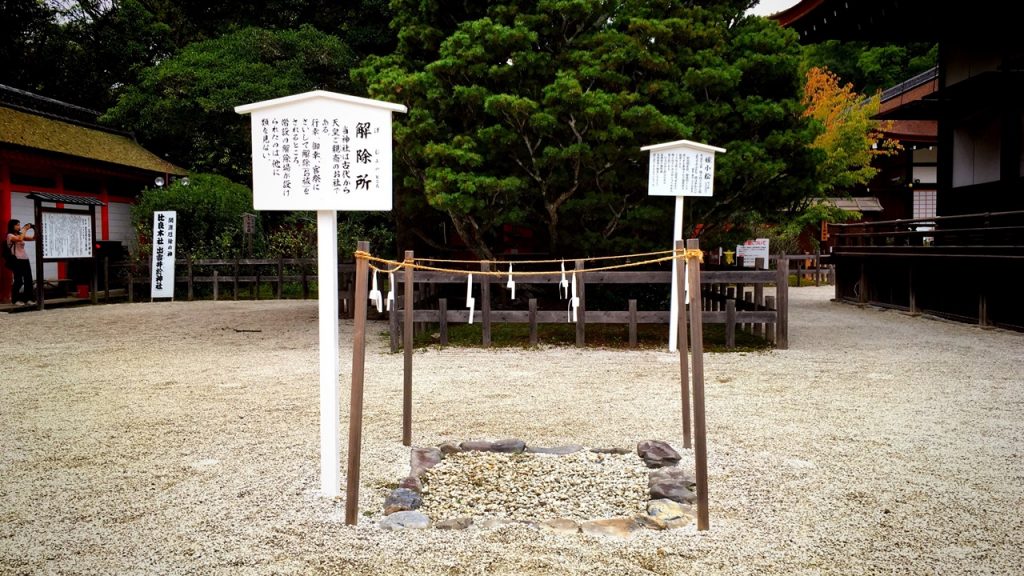
This is the 供御所(Kugosho).
This building is an important cultural property of a country.
This building is a place cooking a Shinsen (osonae (offerings)).

This is Izumo-Inoe-jinja Shrine that is one of the auxiliary shrine (dedicated to a deity close-related to that of a main shrine) of Shimogamo-jinja Shrine.
This building is an important cultural property of a country.
This Shinto shrine has divine favor of the good-luck.
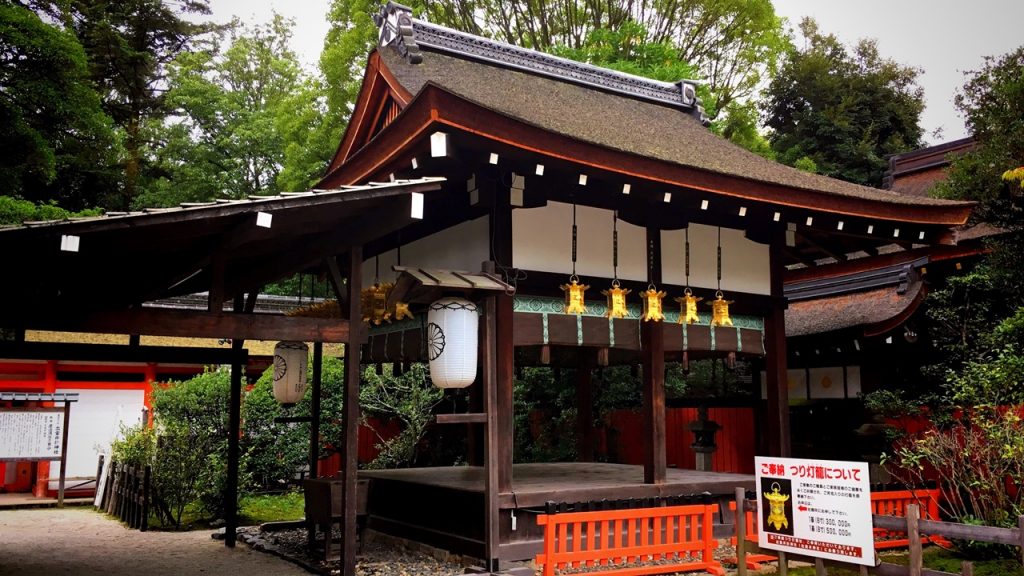
It is said that all the leaf of the tree which was planted in this Shinto shrine becomes notched.
Therefore this Shinto shrine is also called another name “比良木社(Hirakisha)”.
“比良木” means a holly.

This is Mitsui-jinja Shrine that is one of the auxiliary shrine (dedicated to a deity close-related to that of a main shrine) of Shimogamo-jinja Shrine.
Three Gods of “賀茂建角身命(Kamo-taketunumi-no-mikoto)”, “玉依媛命(Tamayorihime-no-mikoto)” and “伊賀古夜媛命(Ikakoyahime-no-mikoto)” is enshrined in this Shinto shrine.
This Shinto shrine has divine favor of “the marriage”, “the easy delivery” and “the child care”.
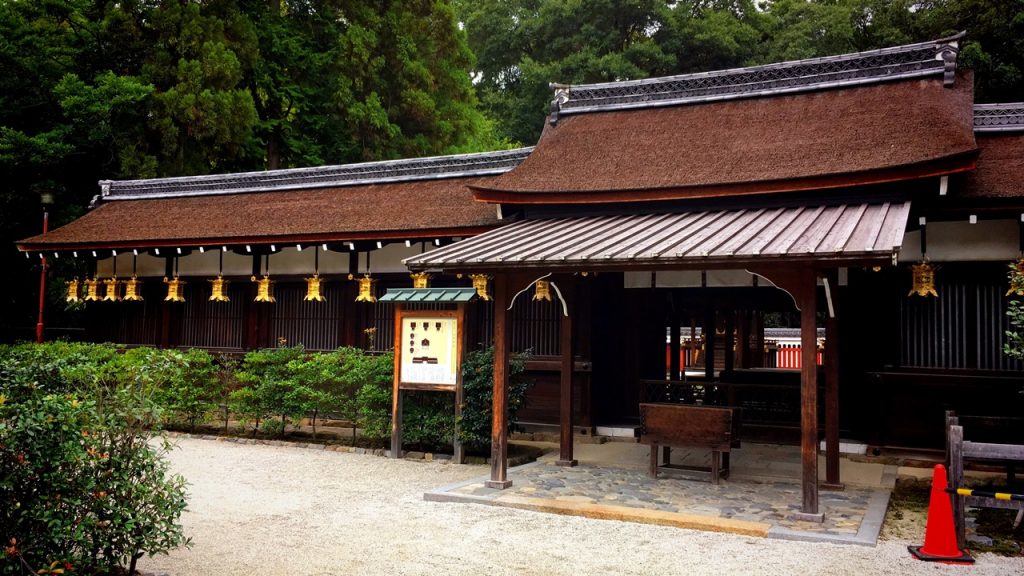
This is Harai-sha Shrine that is one of the auxiliary shrine (dedicated to a deity close-related to that of a main shrine) of Shimogamo-jinja Shrine.
This Shinto shrine has divine favor of “safe trip” and “road safety“.
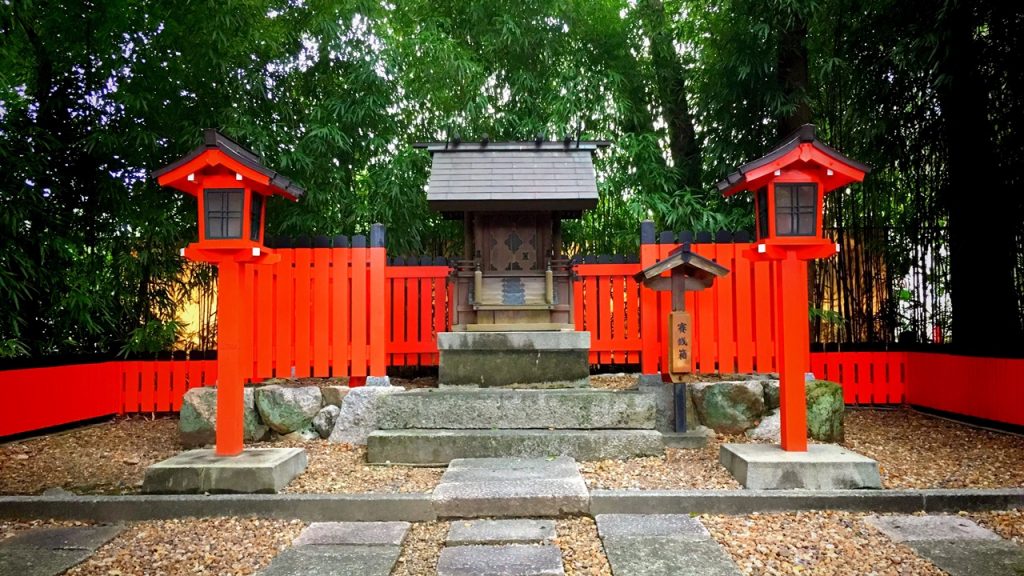
5.Tadasu-no-Mori forest : Virgin forest around Shimogamo-jinja Shrine
The neighborhood of Shimogamo-jinja Shrine is surrounded in a virgin forest called “Tadasu-no-Mori forest(糺ノ森)”.
Tadasu no Mori (糺の森?), which literally means “Forest of Correction,” is a sacred grove associated with an important Shinto sanctuary complex known in Japanese as the Kamo-jinja, situated near the banks of the Kamo River just north of where the Takano River joins the Kamo River in northeast Kyoto city, Japan. The term Kamo-jinja in Japanese is a general reference to Shimogamo Shrine and Kamigamo Shrine, the traditionally linked Kamo shrines of Kyoto.[1] The Kamo-jinjaserve the function of protecting Kyoto from malign influences.[2]
引用(citation):https://en.wikipedia.org/wiki/Tadasu_no_Mori
This forest is appointed as a national historic site.
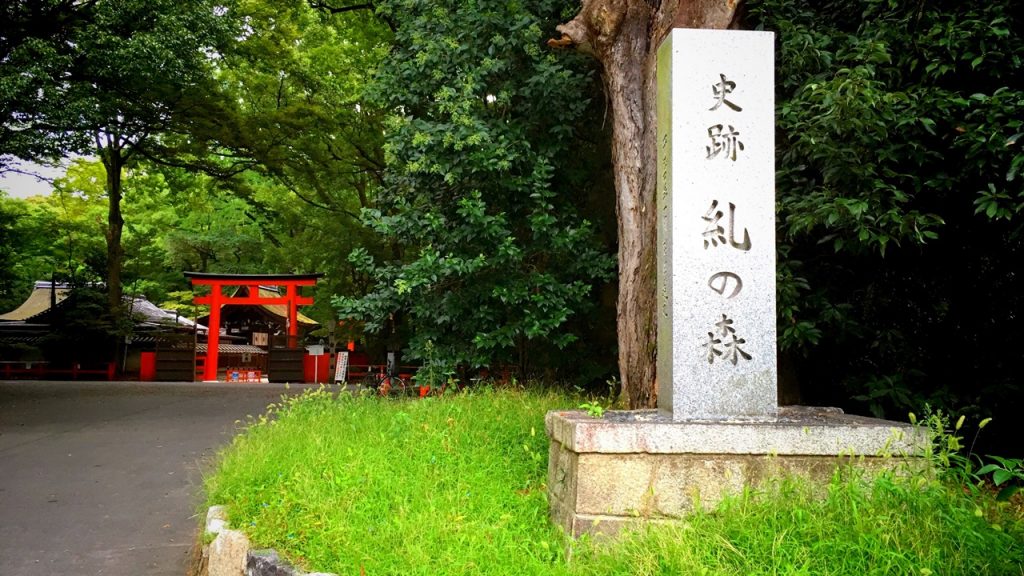
An approach to a shrine spreads straight out in a forest.
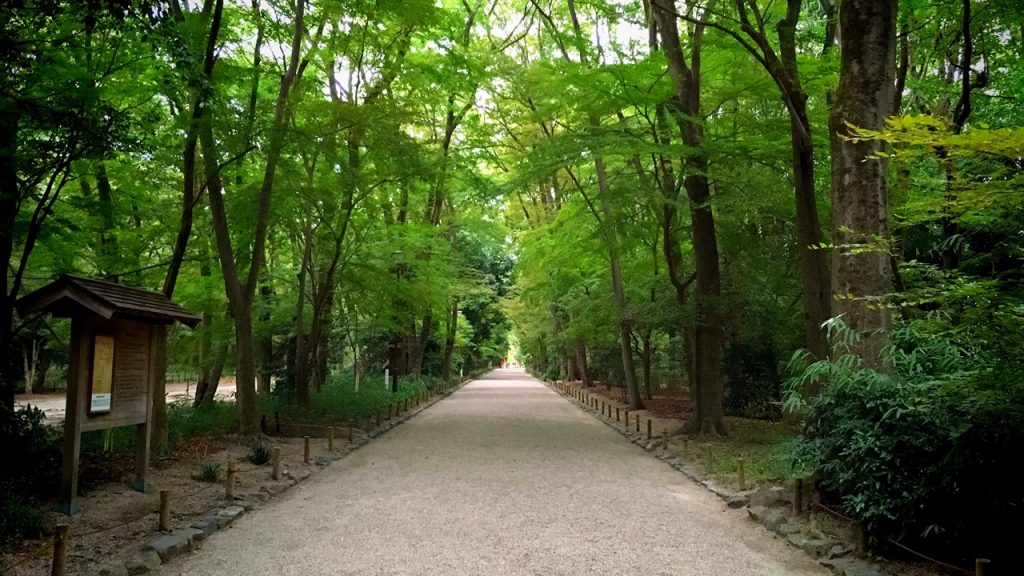
This way is a riding ground.
This place is the place where Yabusame-shinji (horseback archery) is held before Aoi Festival.
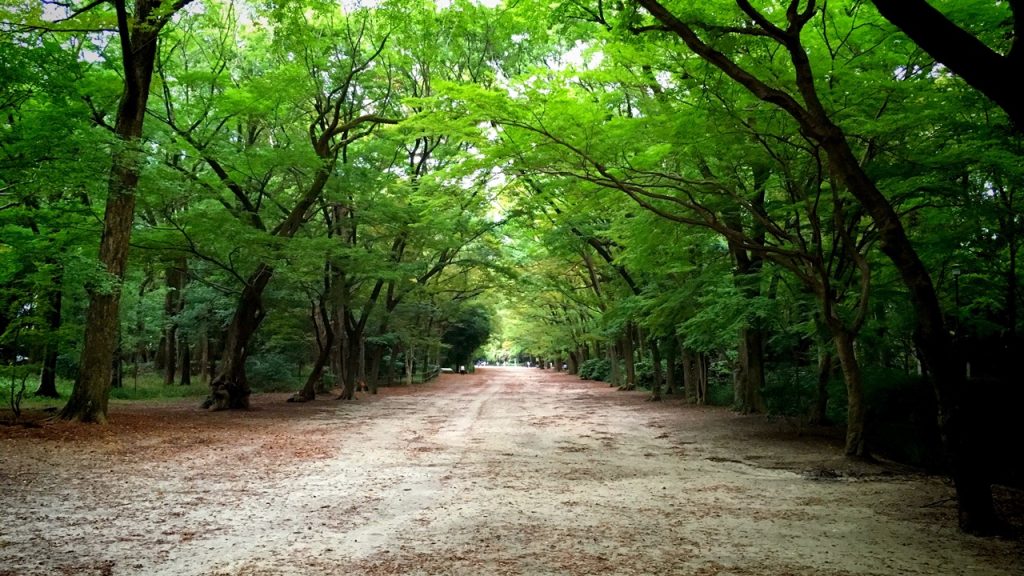
The old tree in this forest is worshiped as a sacred tree.
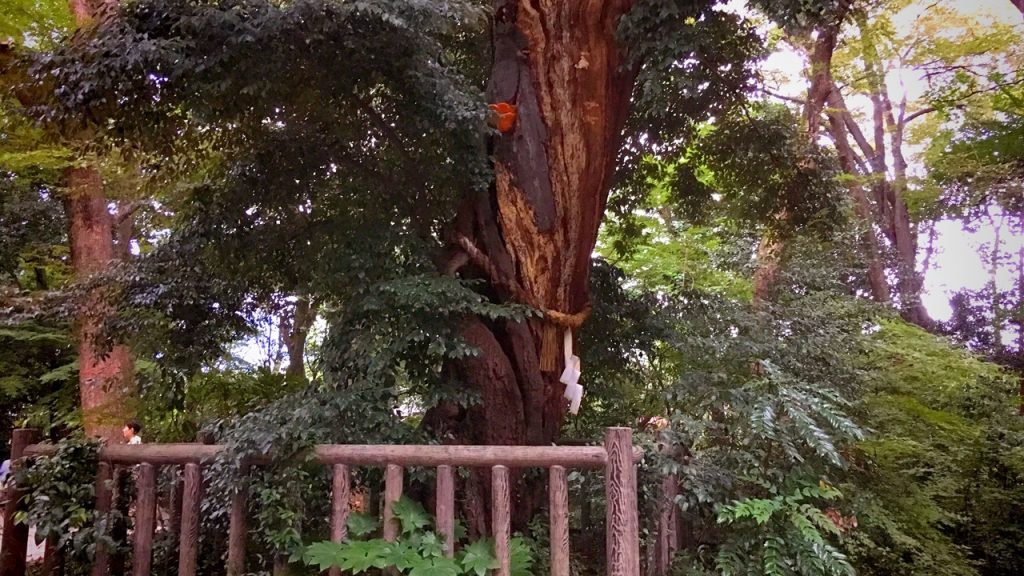
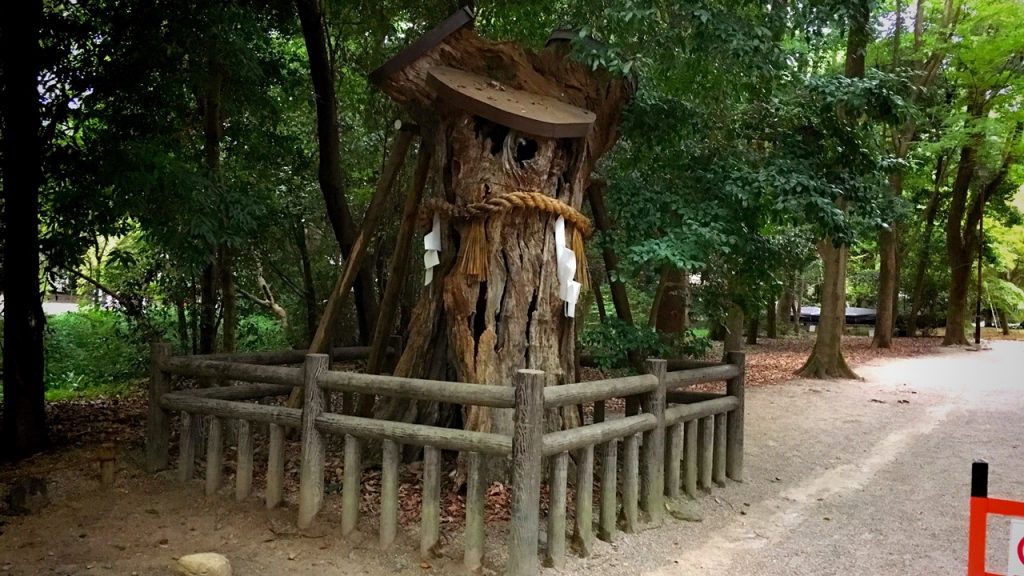
This is the “船島(Funa jima)” of “奈良殿神地(Naradono-no-kami-no-niwa)” in this forest.
In old days, Shinto ritual of the great purification was held at this place.
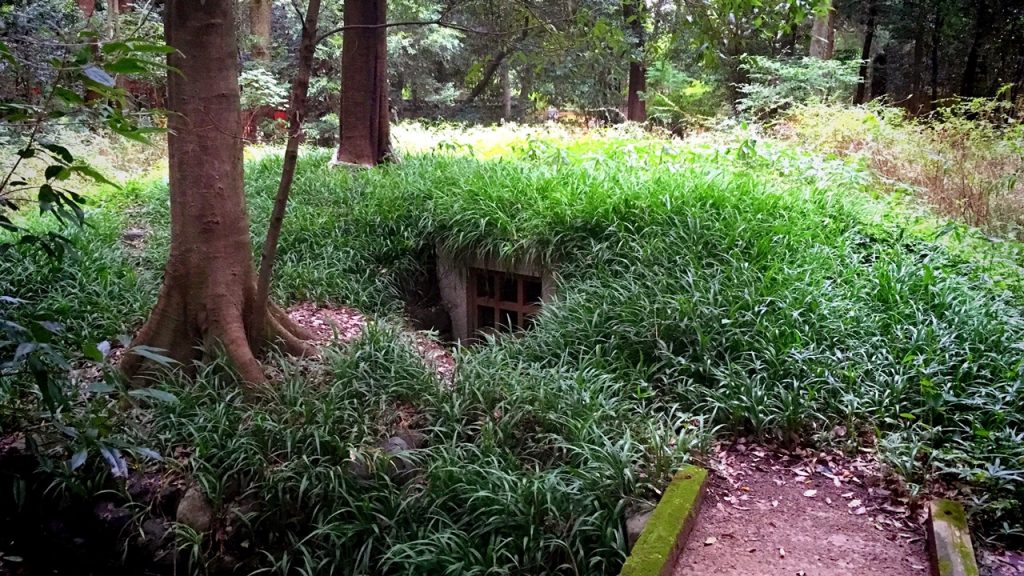
This is remains of an ancient structure of religious service which was built in the late twelfth century.
In this place, various Shinto ritual was held as the holy ground from ancient times. d(*゚ー゚*)
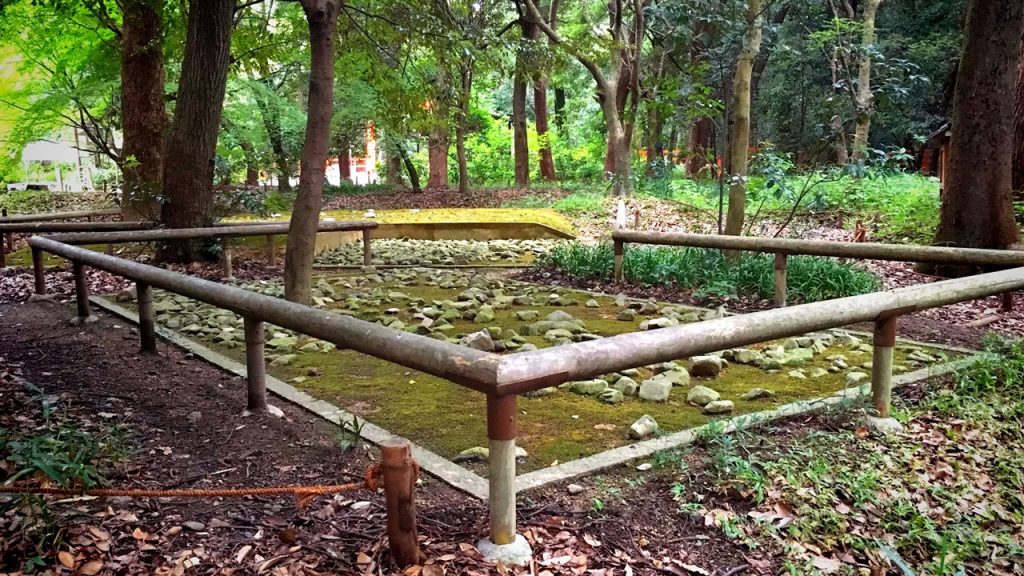
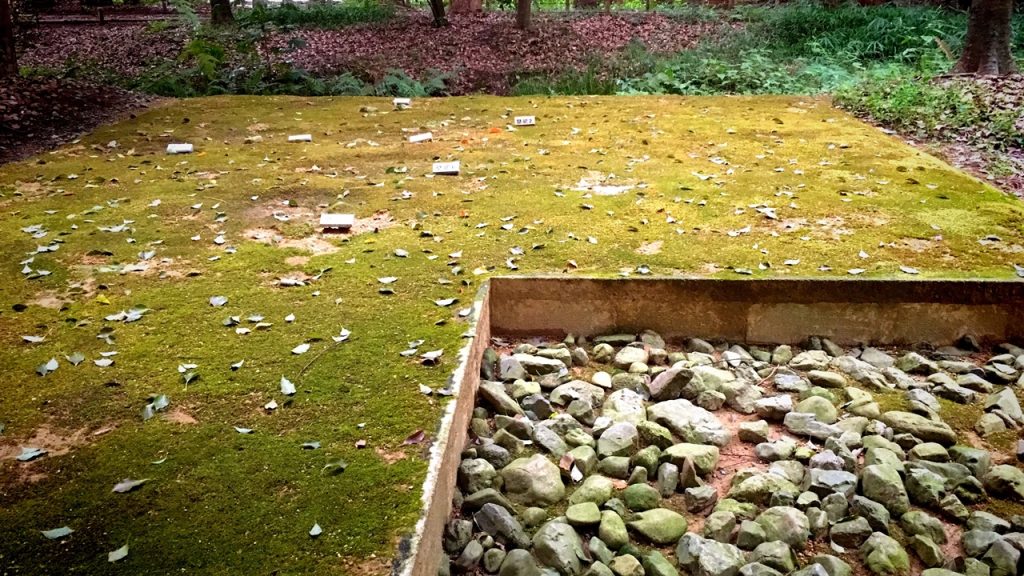
Incidentally, Shimogamo-jinja Shrine is also the birthplace of the rugby of Kansai.
(In Kansai, the first rugby team was founded in 1910 by Daisan Senior High School (old system) that was a forerunner of Kyoto University, and players practiced the rugby in this forest.)
This monument was established in commemoration of origin of the rugby of Kansai.
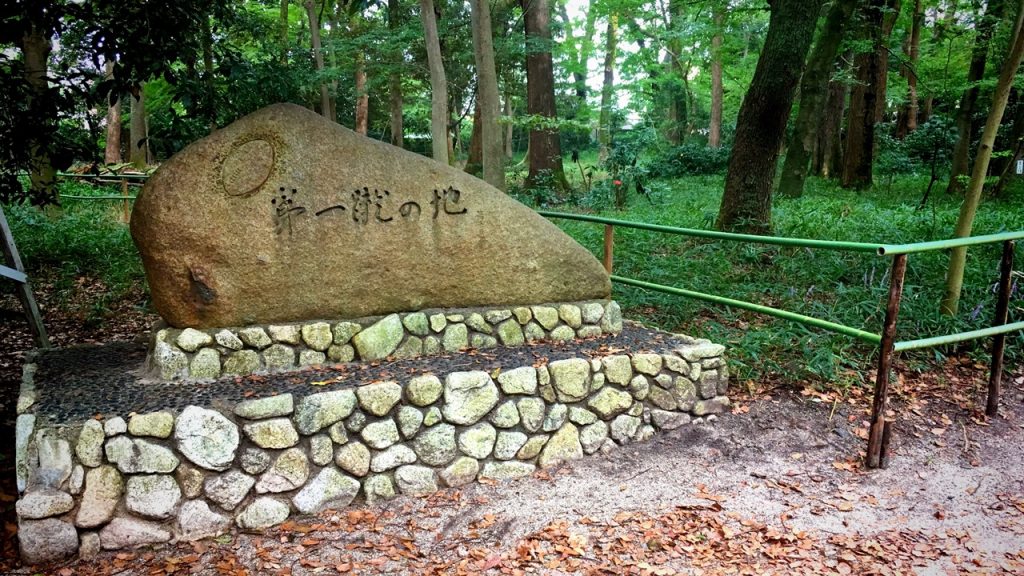
6.Kawai-jinja Shrine : Shinto shrine with the divine favor of the beauty
There are many auxiliary shrines in the Shimogamo-jinja Shrine.
Particularly, Kawai-jinja Shrine is the head of auxiliary shrine of Shimogamo-jinja Shrine.
This shrine is also called “Shinto shrine of the woman protection / The Shinto shrine where Japan’s most beautiful God is enshrined”.
That’s right, this Shinto shrine is a Shinto shrine for women. (○´艸`)
This Shinto shrine has divine favor of the beauty, the easy delivery, the child care and the marriage.
All the divine favor to solve the trouble of the woman gathers in this Shinto shrine. (○´艸`)
Therefore in late years, this Shinto shrine is famous as a power spot very popular with women.
Kawai-jinja Shrine is a Shinto shrine where is in the south side of the Shimogamo-jinja Shrine.
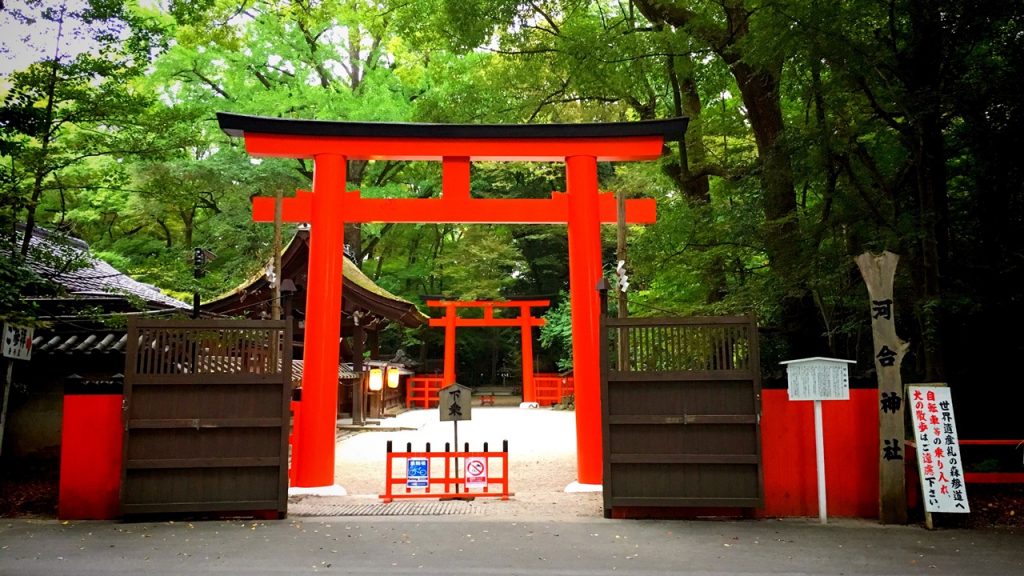
This Shinto shrine worships “玉依媛命(Tamayorihime-no-mikoto)”.
(“玉依媛命(Tamayorihime-no-mikoto)” is also worshiped at Shimogamo-jinja Shrine.)
This God is protecting a woman and is said to be Japan’s most beautiful God.
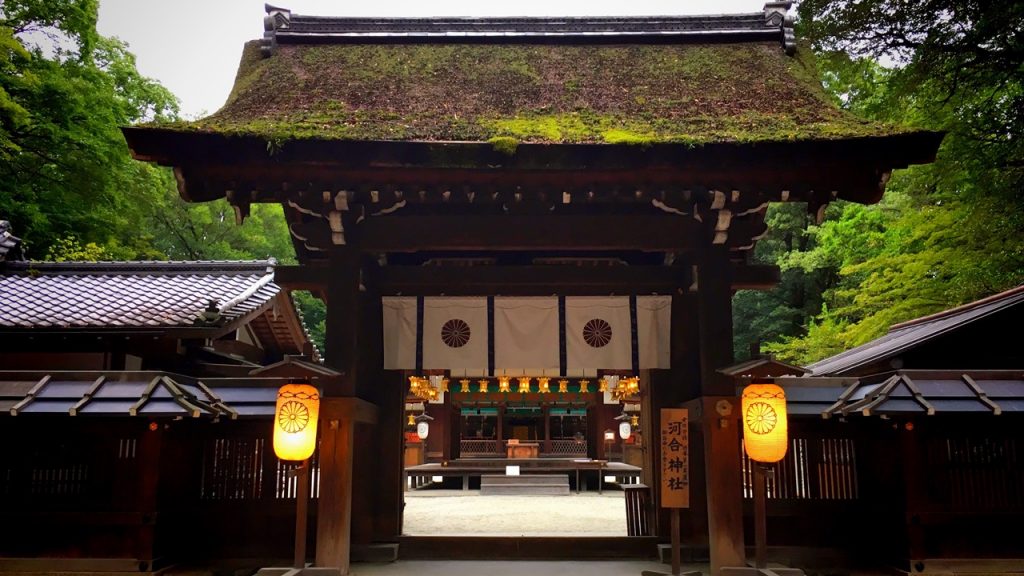
In this Shinto shrine, Ema (a votive horse tablet) is very unique.
This votive tablet called “鏡絵馬(Kagami-Ema)” has a shape of the hand mirror, and a simple face is drawn on the one of the surfaces.
We wear makeup for those simple face, and we write our wish on the other surfaces and dedicate it.
It is said that a wish comes true by doing so.
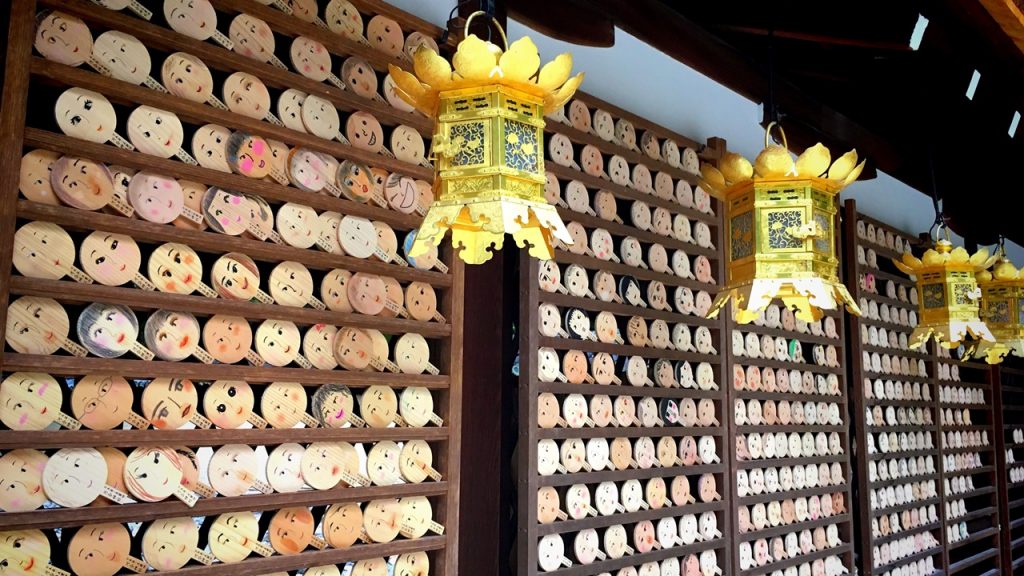
A crayon and a colored pencil are put in this Shinto shrine.
However, we bring our own cosmetics if we can do it, and let’s make up by own cosmetics.
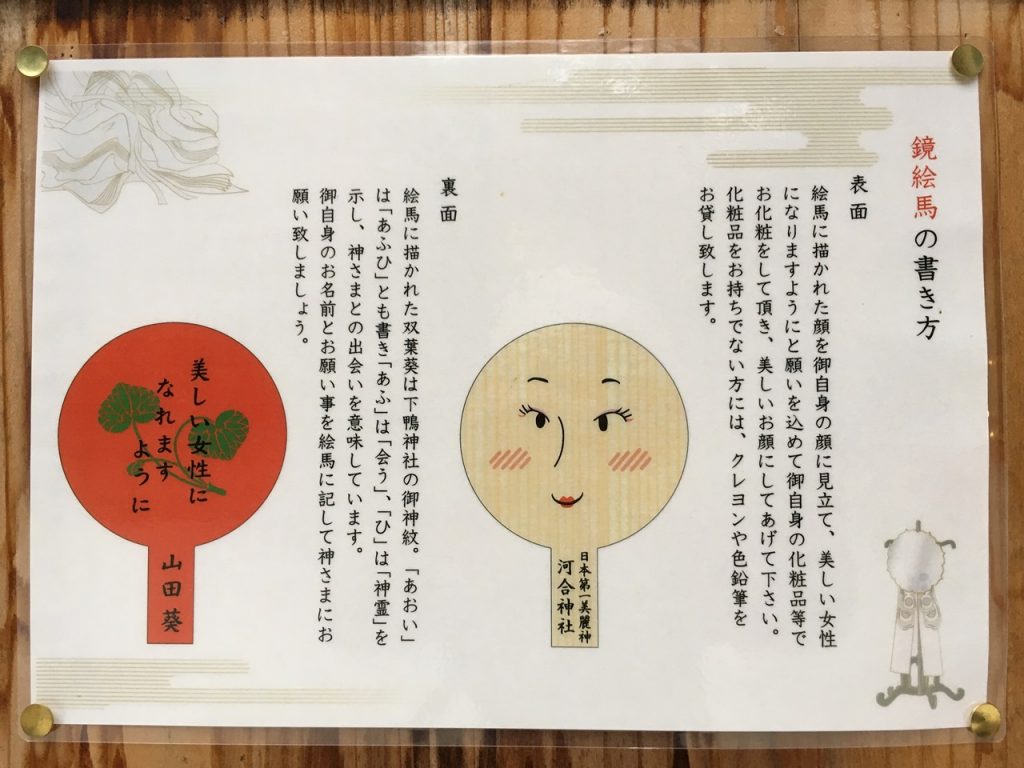
This is the 拝殿(Worship Hall (haiden)).
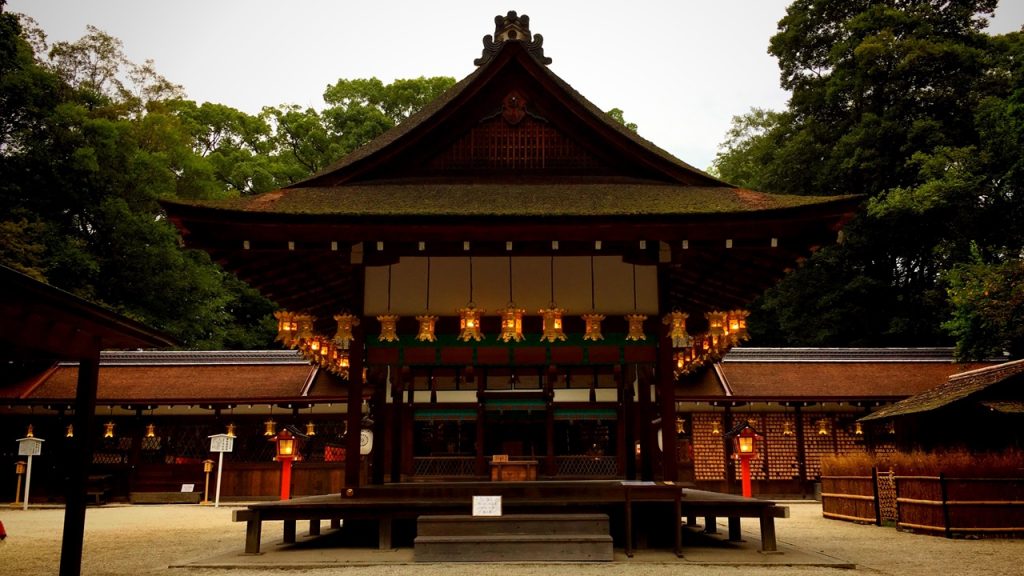
We can draw a 鏡絵馬(votive tablet) in the building where it is in the depths of the front shrine.
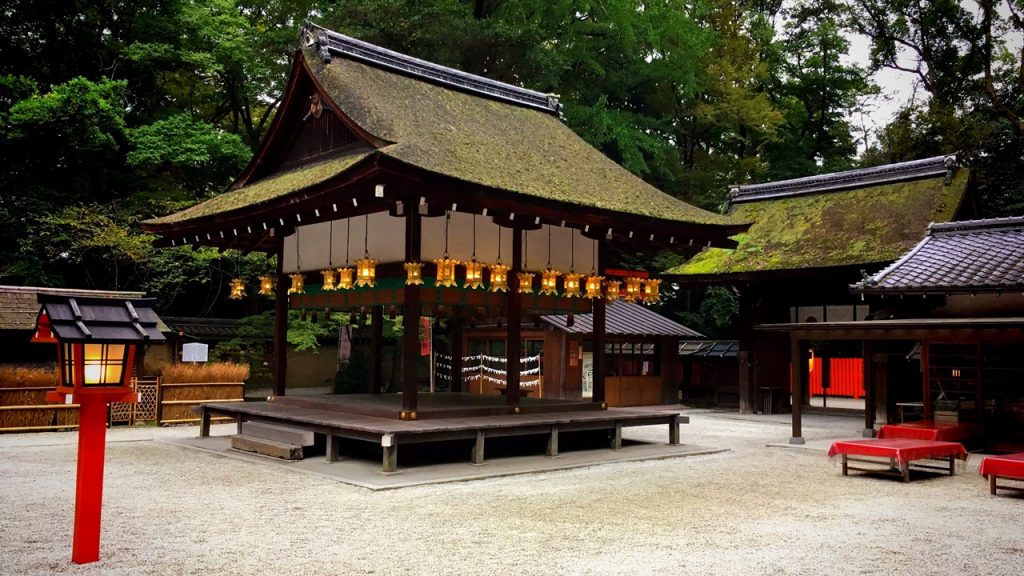
This is 幣殿(Heiden) in front of the main shrine.
There is a main shrine in the depths of this building.
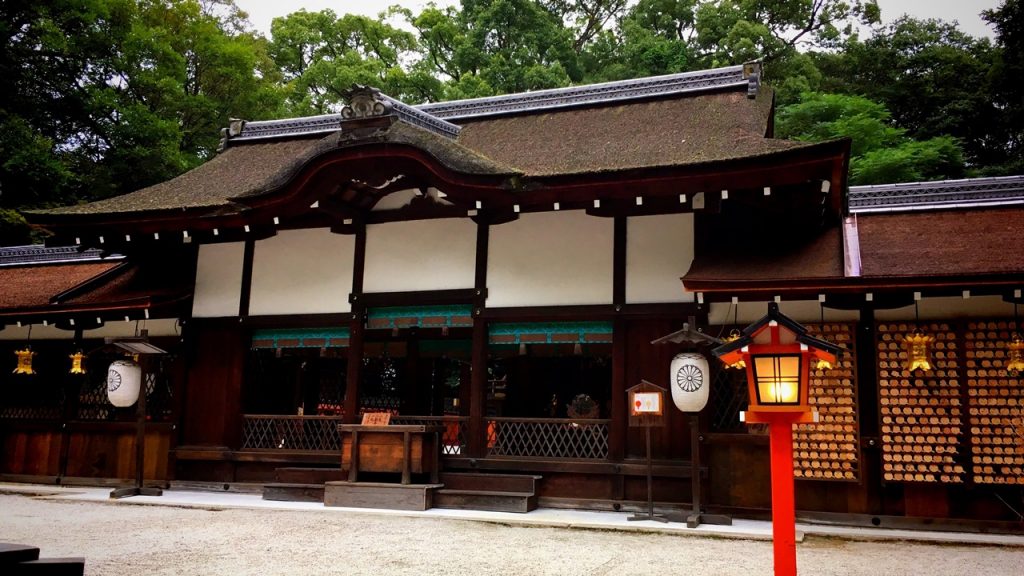
There is a house of Kamono-Chomei who is an essayist of the Kamakura era in this Shinto shrine.
Kamono-Chomei is the person who wrote the Hojoki (Chronicle of my tiny hut) that is one of the Japanese three major essays.
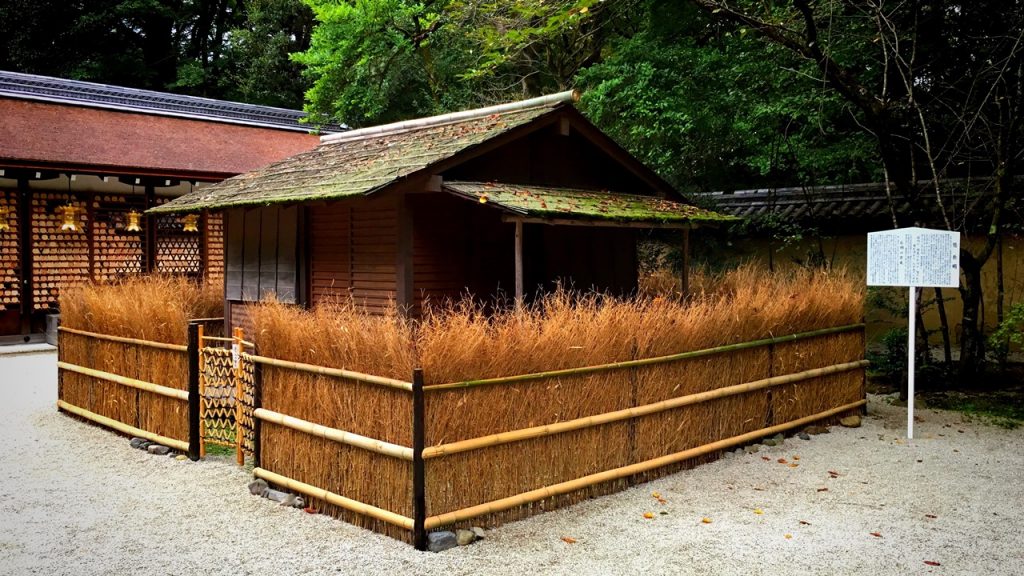
This is the 六社(Mutsu-no-yashiro).
This is the rare building where six small altars became one big altars.

7.Goshuin(shrine seal or stamp) of Shimogamo-jinja Shrine
The word which can be read as “山城国一之宮(Ichinomiya in Yamashiro Province) 賀茂御祖神社(Kamomioya-jinja Shrine)” is written to Goshuin with a sumi.
The green stamp of the top right corner is a crest of the futaba-aoi (a two-leaf mallow) which is the crest of Kamo Shrine.
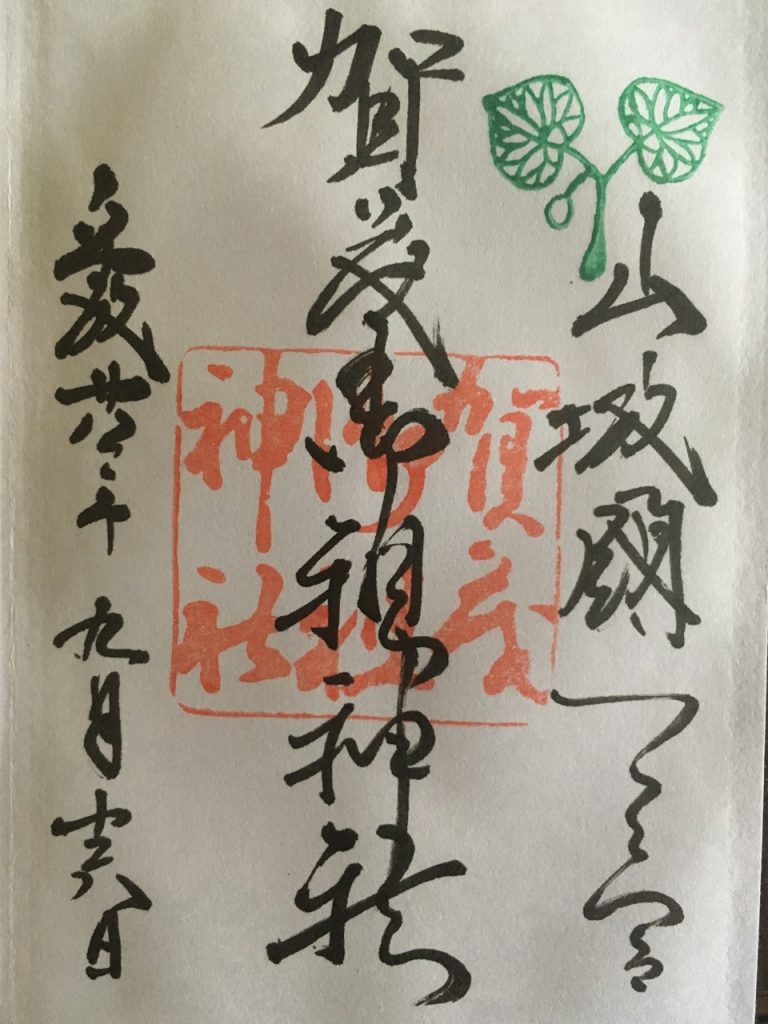
This is the Goshuin of Kawai-jinja Shrine which is the auxiliary shrine of Shimogamo-jinja Shrine.
The word which can be read as “河合大明神(Kawai Daimyojin God)” is written to Goshuin with a sumi.
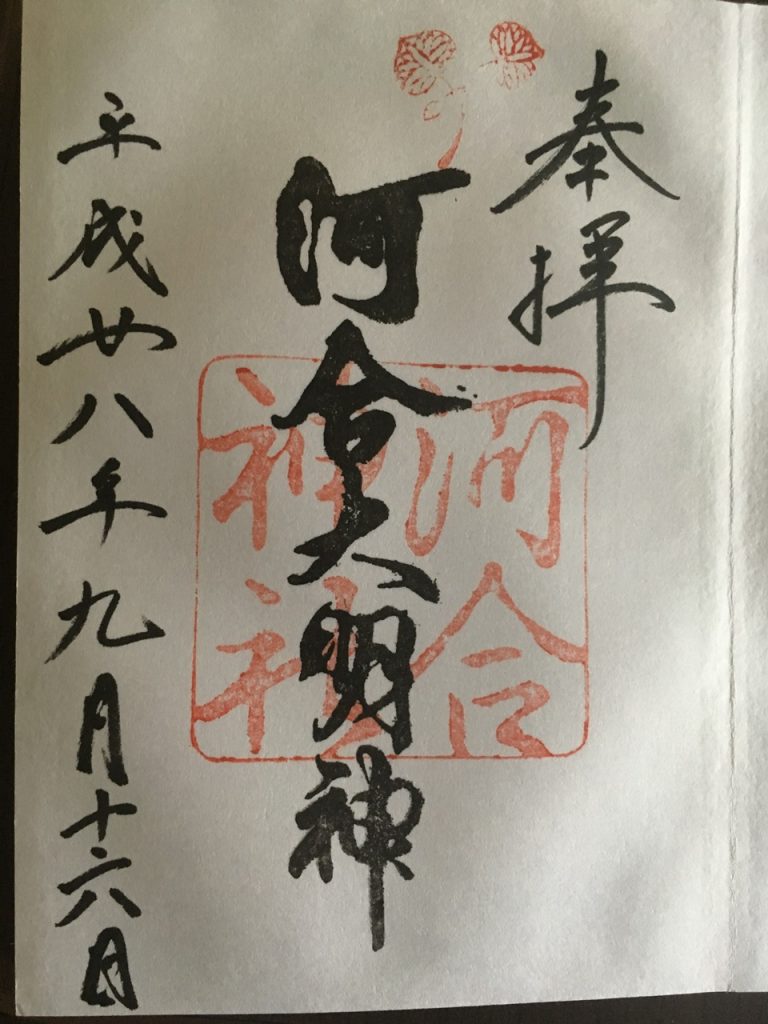
8.How to get to Shimogamo-jinja Shrine
●Map of Shimogamo-jinja Shrine
●Map of World Heritage ‘Historic Monuments of Ancient Kyoto’
The nearest station of Shimogamo-jinja Shrine is Keihan Demachiyanagi Station.
It is about 10-minutes walk from the station.
■Keihan Demachiyanagi Station→Shimogamo-jinja Shrine
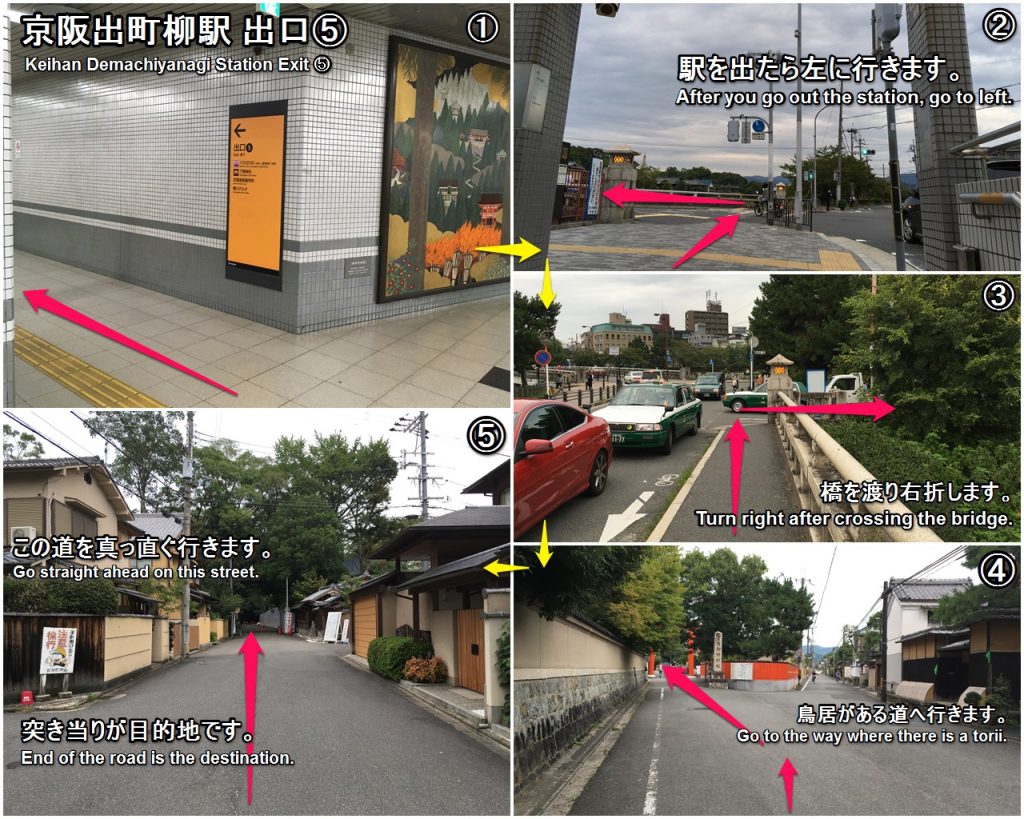
How did you like it?
As well as Kamomioya-jinja Shrine, please taste the holy atmosphere of the Shinto shrine with the oldest history in Japan. (○´艸`)
Have a nice trip! ( *´艸`)
<Let’s search the sightseeing information of Kansai in Japan on ‘Japan’s Travel Manual‘!!>
<This site introduces the easiest way to get Japanese (Kansai) sightseeing spots to you.>




